STIMSON设计事务所由设计师Stephen Stimson创立于1992年。这个由设计师、规划师和园艺师组成的团队已走过三十多年的历史,凭借着对土地的热爱,对场地历史与环境的尊重,冲破浮躁现代景观,以生态连接现在与未来。
mooool团队聚焦景观设计行业,致力于传播全球优秀设计理念,本期mooool专辑带来的是STIMSON STUDIO董事Lauren Stimson的专访。mooool每季度约访全球知名设计公司,传播展现优秀设计理念!
STIMSON STUDIO was founded in 1992 by designers Stephen Stimson. The studio has since evolved into a collective led by five Principals. This diverse and intelligent team composed of designers, planners and horticulturalists has gone through more than 30 years, with the love of land, respect for the site history and environment, to connect the present and the future with ecology.
We focus on landscape architecture industry and devote to spreading the excellent design ideas around the world. In today’s interview, we introduce Lauren Stimson, Principal of STIMSON STUDIO.
总策划:陈科君 / Producer: Kejun Chen
主编辑:陈科君、王兰芳、王维佳 / Editor: Kejun Chen, Via Wang, Weijia Wang
Interview: Mooool x Lauren Stimson
右一/Right one:Stephen Stimson;右二/Second from right:Lauren Stimson(受访人)
导读:
您擅长做什么样的设计
我真正擅长的可能就是去了解一个场地的真实特点。我喜欢营造一种怀旧的感觉:通过运用材料和植物,给人营造一种熟悉感,这些熟悉感有时候可能来自他们从其他地方记住的东西,这会是一个更野性或意想不到的参考方法。
针对改造项目,您是如何进⾏创作的
恢复这种类型场地的景观通常是在保存其历史特征,同时加入独特并具前瞻性的态度/方向,以满足当前以及未来的用户群体的需求。这些项目是最有趣的,因为它们可以将以前被人们遗忘、遗弃或抛弃场地,变成一些新旧共存,最引人注目的改造场地。
您想传递给使用者什么样的感受或者场所记忆
我只是对“乡村与城市、乡村与现代、自然与人工”这些永恒主题进行了不同的探索,这些对比的两重性是最令人难忘的。在场地上寻找设计线索,并使用最寻常普通的材料,这就是聪明的设计。
您是如何处理景观边界,恢复边缘生态的
我发现最有趣的设计其实就是来自于这种设计与自然之间的对比,我们工作室一直在尽力把自然原生的东西引入场地,而不是简单地把它想成一个“边缘生态”,当然,通常情况下是我们将自己构建的元素尽可能地融入自然环境中。
您提倡什么样的种植审美
现在我们不再以个体标本的植物来反映群落,而是采取了更加多样化的态度,利用野生植物群落重新诠释并强化项目场地原本的区域生态,而讽刺的是,这些普通的常见植物,在苗圃可能不容易找到,最终我们要通过其他方式找到这些植物:从受到人工干扰的地方收集它们,或从邻近的地方移植物种,甚至我们自己在自己的苗圃里种植,或者与其他苗圃签订种植合同。我认为,无论是在私人领域还是在公共领域,野生种植的方式最终都会被接受为一种新常态,我们也在不断地在测试客户的容忍度,看他们愿意接受多大程度的景观野性。
专访内容:
Q:请向中国的读者们简单的介绍一下您的工作经验和背景?
Please briefly introduce your work experience and background to Chinese readers.
我是STIMSON的一名董事。STIMSON是一家由设计师、规划师和园艺师组成的景观设计公司,我们的核心工作室由30名设计师组成,位于美国马萨诸塞州剑桥市,创新实验室则位于马萨诸塞州普林斯顿的Charbrook农场中,这里有我们的工作农场和苗圃。我们的工作室由五位合伙人共同领导,我们是一个共同尊重土地,热爱我们工艺的集体。在工作上我们是兼收并蓄的:从公园到博物馆,从大学校园到住宅花园,我们的设计覆盖多种规模和地域;在工作室文化上:我们强烈认同工作和家庭必须合理协调平衡。但要实现这种平衡并不容易,因为我们都拥有一个年轻的家庭,又力求成为设计领域的领导者,这两者常常将人们推向极限。我们工作室做景观设计工作已经将近三十年了,我们非常感谢它的“长寿”,同时也为我们的工作广度而感到自豪。
I am a Principal at STIMSON. We are a landscape architecture practice comprised of designers, planners and horticulturalists. Our core studio of thirty designers is located in the city (Cambridge, MA) and our innovation lab is located at Charbrook Farm (Princeton, MA) where we have a working farm and plant nursery. Our studio is led by five Principals. We think of ourselves as a collective that shares a common respect for the land and love of our craft. Our work is eclectic and ranges from public parks to museums, academic campuses and residential gardens. We design at all scales and every geography. The culture of our studio is nourishing; we feel very strongly that work and home must be balanced. It is not always easy to achieve this balance, but we have a young family and strive to be mentors within the design world that too often pushes people to their limits. Our studio has been practicing landscape architecture for almost three decades. We are very grateful for the longevity and proud of the breadth of our work.
▼STIMSON STUDIO部分作品展示(点击阅读更多) Click here to read more projects of STIMSON STUDIO on mooool
Q:基于背景,您认为对您的工作有什么潜在的影响,您擅长做什么样的设计?
How do you think your background and experience have potentially influenced your work? What kind of design are you good at?
我在美国东北部长大,也在国外和其他地方生活过,但最终还是回到了新英格兰,因为这是我的家,是让我觉得最舒服的地方。小时候,我多数时间都在户外度过——和父亲一起在林场、和母亲一起做园艺、采摘浆果、在屋后的草地上猎蛇、熬制槭糖、越野滑雪、建造树木堡垒,很少呆在室内——甚至包括高中和大学的每一份暑期工作,我都是在室外度过的。现在我总是会不由自主地回想起那些能让我与周围环境建立联系的经历。
新英格兰是美国最古老的地区,拥有一些最早的殖民地、场地设计,和最具历史意义的景观。我一直都很喜欢历史,大学里,我主修的是古希腊戏剧,我的论文是对Euripides的《Electra》进行现代诠释。写论文时,我深入挖掘公元前5世纪的文学文献来寻找现代意义的方式,这有点像我做设计时对场地分析和景观设计的方法,因为我总会寻找一些场地中等待被讲述的、被遗忘或已沉寂的故事,这是一种能与当前受众建立起联系的方式。
我也会先在脑海中创造场景——构图。打个比方,比如我会眯起眼睛观察场地,问问自己这里什么才是真正重要和可见的?还缺少哪些可以加强这一场景的东西?我想这可能来自我在剧院工作的经验,也有可能来自绘画,虽然我只是一个业余的油画爱好者,但它对我在场地分析中确实起到了许多帮助作用。在我们农场的最初场地设计中,我就花了一年的时间为我们的农场做抽象研究和绘画,而我的丈夫则负责进行一丝不苟地测量绘图工作。如今,我们很幸运我们的农场同时拥有了我想象中的场景以及他精确的绘图中的样子。我做事比较倾向于概念思维,在绘制景观图纸的时候,我会忽略其他多余的东西,去提炼出最简单的形式。绘画中的抽象思维帮助了我在更大尺度上思考如何简化景观。
I was raised in the northeast, have lived abroad and in other parts of the country, but have always come back to New England. This place is my home and where I feel most comfortable. I spent a lot of time outdoors as a child—with my father in the woodlot, gardening with my mother, berry picking, snake hunting in the meadow behind our house, maple sugaring, cross-country skiing, and building tree forts. I was rarely inside—I spent even my high school and college years outside for every summer job. I have always gravitated towards experiences that enable me to develop a relationship with the landscape around me.
New England is the oldest part of America. With some of the first settlements, design on the land, and the most historic landscapes. I have always loved history. In college I majored in Theater with a focus on ancient Greek drama. For my thesis I directed a modern interpretation of Euripides’ Electra. Digging deep into a 5th century BC literary document for some present-day meaning. This kind of approach is similar to the way I approach site analysis and the design of landscape. I am always searching for some forgotten or silent story about a site that is waiting to be told. A way to make a connection to a modern audience.
I also create scenes in my mind—compositions. If you metaphorically squint your eyes and look at a site, ask yourself what is really important and visible? What is missing that could strengthen this scene? I suppose it may come from working in theater or perhaps from painting. I am an amateur with oil painting but it helps me during site analysis. I spent a year working on abstract studies and paintings for our farm during the initial site design while my husband meticulously did measured drawings. Today, we are lucky to have both the scene I envisioned with the precision of his drawings. I gravitate towards conceptual thinking. When painting landscapes, I tend to distill down to the simplest forms and ignore the excess. Abstraction in painting helps me think about simplification on a larger scale with landscape architecture.
▼Lauren的油画作品 Lauren’s oil paintings
▼弗洛伦萨格里斯沃尔德博物馆项目的手绘效果图 Hand-painted renderings of Florence Griswold Museum by Stephen Stimson.
▼弗洛伦萨格里斯沃尔德博物馆项目概念草图 Concept sketches of Florence Griswold Museum by Lauren Stimson.
在新英格兰,我们的农场、殖民地村庄和磨砂磨坊小镇非常多样化,与我们的森林、山脉和海洋的自然野性形成强烈的对比——我始终认为我们所种植的不同植物群落应与这些自然景观相呼应。景观在四季中的耐久性是我思考设计的基本原则:无论我们构建什么,都需要坚固耐用,最重要的是,要有背景联系,它需要有归属感,这些都源自于对场地的了解。我的内心深处是一个地域性主义者,我真的认为一个好的景观设计应该是融入场地并与该地区特色产生共鸣的。采取不同的策略进行场地分析和研究就十分重要,比如绘画、素描、制图、摄影、拼贴……有很多方法可以理解和传达场地的历史、状况和意义。我真正擅长的可能就是去了解一个场地的真实特点。我喜欢营造一种怀旧的感觉:通过运用材料和植物,给人营造一种熟悉感,这些熟悉感有时候可能来自他们从其他地方记住的东西,这会是一个更野性或意想不到的参考方法。
In New England, we have so much diversity with our farms, colonial villages, and gritty mill towns. And even more contrast with the wildness of our woods, mountains and ocean—all of these overlapping landscapes overlaid with the mosaic of our different plant communities, is something that will always resonate with me. The ruggedness of our four seasons is so fundamental to the way I think about design; whatever we build needs to be tough and durable, and most of all, contextual. It needs to feel like it belongs. That only comes from knowing a place really well. I am a regionalist at heart and really believe a designed landscape should feel embedded and resonate with the character of the region. I think it is important to take on different strategies for site analysis and research, from painting, drawing, diagramming, photography, collage…there are so many ways to understand and convey a site’s history, condition and meaning. I think getting to know a site, it’s real identity, is probably what I am really good at. I love creating a sense of nostalgia; whether through materials or plants—and giving someone a sense of the familiar, something they may remember from another place, usually a wilder or unexpected reference.
Q:在您的很多项⽬中,有众多项目是为已建成的空间进行改造设计,这类型的项⽬对您来说是否有某种吸引⼒,您是如何进⾏创作的?
In your project, I saw many projects belong to renovation design. Is this type of project attractive to you? How do you design for this type of project?
现如今,能碰到的场地基本都是已经开发过的了,很少有机会让你在一个完全绿色的环境或没有人工痕迹的场地进行设计,这是一个非常具有挑战性的既存状况,无论是大学校园还是城市中心,基本都是需要重新改造的场地,这些类型的项目几乎构成了我最近所有的工作。做这种类型的项目就像做外科手术一样,我们要先非常仔细谨慎地了解景观的现状,这么长时间以来,是什么塑造了场地,当前的问题是什么,以及可能的解决方案是什么。景观设计师和业主/客户之间通常有一个主要的协作过程,我们非常依赖他们的指导和反馈,因为恢复这种类型场地的景观通常是在保存其历史特征,同时加入独特并具前瞻性的态度/方向,以满足当前以及未来的用户群体的需求。这些项目是最有趣的,因为它们可以将以前被人们遗忘、遗弃或抛弃场地,变成一些新旧共存,最引人注目的改造场地。
These days, it is very rare to work on a green site, or one that has not been altered. I think it is very challenging to come into a pre-existing condition, whether in a university campus or urban core and be presented with a site that needs reconditioning. These types of projects comprise almost all of my recent work. These projects are like surgery; great care is taken to understand the current condition of the landscape, what has shaped the site over time, what the current issues are and what the potential solutions can be. There is often a major collaborative process between the landscape architect and the owner/client. We rely heavily on them for guidance and feedback along the way. Restoring these kinds of landscapes are often a mix of preserving some historic identity, while introducing a distinct and forward-thinking attitude that addresses the current and future needs of the user groups. These projects are some of the most interesting because they can be the most dramatic—improving sites that were previously forgotten, abandoned or derelict and transforming them into something new, but familiar.
▼威廉姆斯学院设计手稿——源自场地地理特征的改造设计 Williams college design manuscript — Inspired by the local geographic features
▼行走或停留在“岩层”空间 Walk or stay in “the ledges” space
Q:您在处理景观边界时非常谨慎,如何介入适当的景观,恢复边缘生态,完成从人⼯到自然的过渡?
You are very cautious when dealing with the landscape boundary. How do you intervene in the appropriate landscape, restore the site edge ecology, and complete the transition from artificial to natural?
我发现最有趣的设计其实就是来自于这种设计与自然之间的对比,而且难道不是每个景观设计师都能找到这种张力,并以某种方式重新诠释它吗?我们工作室一直在尽力把自然原生的东西引入场地,而不是简单地把它想成一个“边缘生态”,当然我们把那种自然野性带入空间核心的同时,也会给它以明确的界线,有时候,我们喜欢通过种植当地的原生植物来模糊场地边缘或界面,场地边缘顺势将野生植物融入我们的设计,当然,通常情况下是我们将自己构建的元素融入自然环境中,大多数时候,我们都是流线整合式的设计,即通过使用墙、边缘、曲线-线性或硬化来定义、约束和控制自然元素。
I find the most interesting design comes from this kind of contrast—between the designed and the natural. Doesn’t every landscape architect identify this tension and reinterpret it in some way? In our studio, we try to push the wild into boxes, rather than think about it as simply an ‘edge ecology’, we invite that wildness into the heart of the space, but give it distinct boundaries. Sometimes we like to blur the edge or interface by sharing a plant palette that references the indigenous ones that are already on the site. Wild plants enter our composition by invitation from the edge conditions. Often, we insert our own built elements into the natural context. Much of our work has this attitude about fluid integration and we use walls, edging, curbs—linearity or solidness to define, restrain and control natural elements.
▼模糊边界的处理方式-将自然原生的东西融入场地中 Blur the edge or interface by sharing a plant palette-“push the wild into boxes”.
▼哈德伯杰公园概念设计研究 Hardberger Park Concept Study
▼哈德伯杰公园远眺 Hardberger Park Overlook
Q:每当看您的作品时,第一印象是“设计原来可以如此朴实”,在你的作品中, 新与旧的材料,粗糙与精致的做法,人工与自然的植物搭配,这些细节,往往被刻意的安排在一起,您想传递给使用者什么样的感受或者场所记忆?
Every time I look at your works, I have the impression that “Wow, design can be so simple”. In your works, we see new and old materials, rough and delicate practices, artificial and natural plants are often deliberately arranged together. What kind of feelings or site memories do you want to convey to the users?
我和我丈夫住在一个我们已建有十年的农场里。这片土地既代表了一种现代家园美学,也反映出了一种古老的生活态度。房子是我们自己开垦土地、砍伐树木建造的,我们在花园里种上了蔬菜和水果,还恢复了牧场,饲养牲畜,用以供给日常肉类食品和羊毛用品,苗圃里我们种植了灌木丛和绿篱墙,用以隔离野生动物。在美国有一句非常简单直白的谚语——心灵手巧的美国佬。在场地上寻找设计线索,并使用最寻常普通的材料,这就是聪明的设计。要善于思考,尽量节俭行事,虽实际情况并非全如人愿,但我们一直在尽力遵循这些指导方针,这样我们就不会偏离我们的使命,去打造一个既让人感觉它属于我们的殖民地城镇,又在乡村环境中展示了设计创新的地方。
我真的觉得我们所做的一切都不新鲜,只是对这些永恒主题——乡村与城市、乡村与现代、自然与人工——进行了不同的探索,这些对比的两重性是最令人难忘的,同样,这种通过物质、历史和场地生态来利用熟悉事物的渴望,对我来说非常重要。
My husband and I live on a farm that we have been building for a decade. It is a modern homestead in aesthetic, but at the same time reflects an age-old attitude about living off the land. The house was built from trees we harvested and milled from the land we cleared. We planted gardens for vegetables and fruit. We restored pastures for our livestock that we raise for meat and wool. We planted thickets and hedgerows from our nursery plants for wildlife cover. We have a very straightforward philosophy at home—Yankee ingenuity. Take cues from our land. Use ordinary materials. Have cleverness in design. Be resourceful. Try to do things frugally. This isn’t always the case, but we try to follow these guidelines so that we don’t stray from our mission to craft a place that both feels like it belongs to our colonial town and demonstrates innovation in design in a rural setting.
I really feel that nothing we do is ever new, it is just a different physical exploration of these timeless themes—rural and urban, rustic and modern, wild and tame. The duality of these contrasts is what is most memorable. And again, this desire to draw upon the familiar—through materiality, history and site ecology—this is very important to me.
▼Stimson夫妇在农场自然生态的日常生活 Natural ecology of farm life
▼哈德伯杰公园——设计结合场地原有的元素,融合人工与自然。 Hardberger Park – The design combines the original elements of the site, fusing artificial and natural.
▼自然与人工的对比和融合,体现在校园中的细节。The contrast and integration of nature and artificiality are reflected in the details of the campus.
Q:⽤自然的材料元素,去作为设计的一些最核心的价值观念的输出。在很多国外的设计公司当中都会用,但是你们是如何去实现突破,做出差异化,找到属于你们⾃己的一些语⾔特征?
Many design firms express some core values of their designs by using natural material elements. However, how do you achieve breakthroughs, create differences and find your own material style characteristics?
我们所有的设计都是为了反馈表达出我们对场地、项目和用户需求的理解。任何被感知到的突破都只是我们通过设计表现出来的某种场地的独特特色。我们会做许多选择和研究来得出最终的结果。我想说的是其实我们没有一个特定的独特风格,因为我们所有的设计都是特定于场地的。我曾听许多其他设计师说过“我不知道STIMSON做过那个项目”,这难道不是一种赞美吗?没有一个固定的风格,可以适用于世界各地,相反,我们会保持场地的背景关联,努力仔细了解每个基地和项目,以免重复不合适的模式化设计语言。
All of our work is in response to our understanding of the site, the program and the user needs. Any perceived breakthroughs are simply our way of expressing some unique character that is manifested through design. We often do multiple options and studies to get to a final outcome. I would say we don’t have a distinct style, because all of our work is so site specific. I have heard many other designers say at some point in time ‘I didn’t know STIMSON did that project’. This is a compliment. Isn’t that important? To not have a set style that you stamp across the world? Instead, we remain contextual. Making great effort to get to know each site and project carefully, so as not to repeat a pattern language that is not appropriate.
▼马萨诸塞大学——从伯克希尔山脉的种植中获取设计灵感 Take design inspiration from the planting of the nearby Berkshire Mountains, each one with a particular function relating to the site’s hydrology and topography.
Q:这种独特的⾃身具有更强识别性的自然主义设计,我想不仅只是局限在对自然的尊重或者是恢复边缘生态、材料的运用等问题上。一定是源于您对设计意识更深层次的最核⼼价值点,可否给我们深入的聊一聊您的设计理念是什么?
I think this unique naturalistic design with strong identification is not only limited to respect for nature or restoration of marginal ecology, application of materials and other issues. It must be the core value of your deeper awareness of design. Can you give us an in-depth talk about your design philosophy?
我们热爱这片土地,这份热爱延伸到了我们对设计、细节和景观工艺充满激情的思考方式。前面我已经谈到了这一点,但从本质上讲,我们真的一直在努力让每个场地在其他元素中拥有历史和生态,这在我们的设计表达中发挥重要作用,与此同时,也会通过材料和植物创造形式,产生强烈的空间甚至情感体验,解决客户的重要项目需求。我们真的希望人们能够喜欢我们设计的景观,无论是300英亩的公园还是¼英亩的花园住宅,我们都希望人们能够身在其中,得其所赏。
We have a love affair with the land. And it extends into the way we think passionately about design, details, and the craft of our landscapes. I have touched upon this, but in essence, we really strive to allow each site to have history and ecology amongst other elements, play important roles in our design expression. While at the same time, solving important client program requirement and creating forms through materials and plants that result in strong spatial and even emotional experiences. We really want people to love being in our landscapes, whether it is a 300-acre public park or a ¼ acre residential garden. And to gain some appreciation for the environment by being there.
Q:在您的作品Williams College New Quad and the Ledges,Pulaski Park中, 植物搭配透着原始与粗狂。在Cider Ridge Farm和Cove House中可以看出植物是被精心设计的,⼈工中透着永恒的⾃然感受(虽为人作,宛⾃天开)。在植物的种植审美方面,您提倡的是什么样的种植审美?
In your work Williams College New Quad, The Ledges and Pulaski Park, the plant collection is original and wild. However, it can be seen from Cider Ridge Farm and Cove House that the plants are carefully designed. In terms of plant planting aesthetics, what kind of planting aesthetics do you advocate?
我们认为每一处景观都是一个花园。虽然每一个项目的规模和环境都不尽相同,但其实我们都可以将其理解为一个为周围环境提供喘息和放松的花园空间。除了材料、地形和水,植物对于在项目中创造一种空间感也非常重要。Cider Ridge Farm 和Cove House 这两个项目都是带有一系列户外房间的花园。这两个项目的种植形式都是在加强这些空间,所以项目中的植物通常是线性和建筑性质的,它们的形式都相当大胆——以便界定场地边缘、走廊,和强调场地地形和水文。
We consider every landscape a garden. The scale and context always changes, but every project has the potential to be interpreted as a garden that offers respite and relief from its surroundings. In addition to materials, landform and water, plants remain so important to creating a sense of place. Cider Ridge Farm and Cove House are both gardens with a series of outdoor rooms. The planted form of both of these projects reinforces these spaces. Often linear and architectural in nature, the plants in these projects take on forms that are quite bold—defining edges, corridors and reinforcing landform and hydrology.
▼Cider Ridge Farm——通过场地特性,植物种植形式来加强空间感,界定场地边缘。 Through site characteristics, plant planting forms enhance the sense of space and define the edge of the site.
▼小康普顿花园——特定于场地的庭院景观 Little Compton Garden – Site-specific courtyard landscape
而在威廉姆斯学院(Williams College),这些岩石壁是对场地山脉的一种有形表达,以及对当地标志性材料大理石的致敬;利用山毛榉,檫木,山核桃,枫树,云杉和各种高山灌木和地被植物的种植则反映出附近格雷洛克山的一种典型的裸岩生态。Pulaski 公园的河岸植物雨水花园激活了Mill河的健康生态系统,这是一种通过城市景观表现现代北安普顿市的环境伦理的方法。这两个项目都是城市规模类的,但同时也是另一种意义上的花园,所以就利用这些野生植物群落重新诠释并强化项目场地原本的区域生态。
At Williams College, in the Ledges were conceived as a tangible expression of the mountains and a nod to marble, the iconic material of Williamstown. The planting reflects an expression of an outcrop ecology typically found on nearby Mount Greylock; beech, sassafras, hickory, maple, spruce and a variety of alpine shrubs and groundcovers. At Pulaski Park, the health of the Mill River ecosystem was evoked through an expansive stormwater garden of riparian plants. A way to make the present-day environmental ethic of the City of Northampton visible through the civic landscape. These projects are both civic in scale, but remain gardens at the same time. These wild plant communities reinterpret familiar, regional ecologies that reinforce the site context.
▼Pulaski Park——通过当地的野生植物群落重新诠释了当地区域生态,强化场地环境。 These local wild plant communities reinterpret familiar, regional ecologies that reinforce the site context.
Q:在美国景观行业中普遍提倡什么样的种植方式?植物审美这些年有没有发⽣变化?
What planting methods are widely advocated in the landscape industry in American? Has plant aesthetics changed over the years?
Olmsted曾在19世纪中期重建了城市环境中的野生生态系统。两个世纪以来,我们的国家似乎忽视了这个系统的“生态”部分,一次又一次的铺筑和毁灭自然。在上世纪70年代开始,我们会在设计时考虑到环境伦理,这无疑是一种复兴。而在过去的十年里,我们甚至付出了更大的努力,在机构、学术和公共领域推行更大胆的种植方式。现在我们终于不再以树木和草坪景观,以及个体标本的植物来反映群落,而是采取了更加多样化的态度。同样,虽然我们的现代世界更加密集和复杂,我仍然相信我们正在做的事情应该与Olmsted所做的一样。如今的项目正以如此不同的尺度推动着野性自然景观的发展,从整个城市到袖珍公园,以至于自然与人工之间的关系更加紧张,就比如,随着周围的迅速发展,我们引入和设计的干预措施变得更加引人注目和易于识别。
我认为最成功的种植设计方法应是全面整体的——从土壤科学和园艺到文化和环境意义以及由此产生的景观特征。我们发现,我们的许多项目都受益于种植方法,这些方法实际上是从场地上原有的东西中获得的线索,换句话说,就是阐释并放大场地的潜在生态,这就意味着我们要培育普通的常见植物,而讽刺的是,这在苗圃可能不容易找到,我们需要通过其他方式去找到这些植物:从受到人工干扰的地方收集它们,或从邻近的地方移植物种,甚至我们自己在自己的苗圃里种植,或者与其他苗圃签订种植合同。我认为,无论是在私人领域还是在公共领域,野生种植的方式最终都会被接受为一种新常态,我们也在不断地测试客户的容忍度,看他们愿意接受多大程度的景观野性。
Olmsted was restoring wild ecosystems within urban environments in the mid 1800s. Our country seemed to ignore the ‘eco’ part of this system for two centuries while we paved over and obliterated nature time and time again. Since the 1970s, there has most certainly been a resurgence in designing with an environmental ethic in mind. And even greater effort in the past decade to push a wilder approach to planting within the institutional, academic and public realm. We are finally moving beyond the tree and lawn landscape and embracing a more diverse attitude about plants that reflect communities rather than individual specimens. Again, I remain unconvinced that we are doing anything differently (than Olmsted), but our modern world is much denser and more complicated. Today’s projects are pushing for wildness at so many different scales, from the city-wide to the pocket park, that the tensions are greater between the natural and the manmade. With so much surrounding development, our introduced and designed interventions become more dramatic and recognizable.
I think the most successful approach to planting design is comprehensive and holistic—engaging everything from soil science and horticulture to cultural and environmental significance and resulting landscape character. We are finding that many of our projects benefit from approaches to planting that really take cues from what is already found on the site. In other words, interpreting the inherent or latent site ecologies and amplifying them. This usually means cultivating ordinary plants, that ironically, may not easily be found in nurseries. We end up finding these plants through other means; collecting them from disturbed sites or transplanting species from adjacent properties. Or even growing them ourselves in our own nursery or contract growing with other nurseries. I think the desire to embrace wild planting has finally been accepted as the new normal in both the private and public realm. We are constantly testing our clients’ tolerances for how much wildness they are willing to embrace.
▼利用场地原有的野生植物,建立场地特有的生态环境。 The original wild plants of the site are used to establish the unique ecological environment of the site.
Q:这种看上去很生态的植物种植方式,是否为解决环境⽣态问题带来了实效作用?你们的检测标准是什么,是否有做过测评?
Is this seemingly ecological planting method effective in solving environmental and ecological problems? What are your test criteria and have you done any evaluation?
我们在许多项目中探索的植物恢复和自然环境恢复,是朝着我们刚刚开始着手的恢复生态这一更大使命迈出的又一步。几乎在我们所有的项目中,我们都持一种态度,例如,对待雨水,我们会其处理成一些生物沟渠或者雨水花园,它们在外观表达上,有很大的潜力来加强景观特征,并缓解几乎一直存在的传统排水系统问题。
关于我们所指定的植物,以及植物作为一个群落随着时间的推移进化的能力,我们还有很多要学习的。建立这些需要很长的时期,以及植物的死亡率取决于天气和维护,当然我们也知道,规划和后期管理是这个过程的一部分。景观设计是一种承诺,我们景观的演变更替还涉及到后期管理治理。近年我们一也直致力于建立一个后期评估系统来衡量我们的景观表现。
Restoration planting and the wildness that we explore on many of our projects is another step in the direction of a larger mission of restoration ecology that we are just starting to embark upon. On almost all of our projects, we have an attitude, for example, about stormwater that results in some visible manifestation of a bioswale or rain garden. Surficial expression has so much potential to reinforce the character of the landscape and to alleviate conventional drainage systems that are almost always already in place.
We have so much more to learn about the plants that we specify and the ability of plants to evolve as a community over time. Establishment takes many seasons and mortality rate can be tenuous depending on the weather and the maintenance. We know that planning for succession is part of the process. Landscape design is a commitment. The evolution of our landscapes involves curation and management. Establishing a post-evaluation process for benchmarking the performance of our landscapes is something we have been working on in recent years.
Q:您和您先生的“生态实验室”,主要在做哪些研究,在项目中有哪些实践和运用?
What research is going on at your studio’s “charbrook farm”? What are the practices and applications in your project?
Charbrook是我们的一个实验室,最近我们正在建造一个木材/模型室,这样我们就可以研究现场家具、照明和其他定制元素的模型和原型。农场里的草籽和草料混合物的试验田帮助我们了解了许多我们研究的物种的生存能力,但要真正对它们有信心却很难,因为草地需要很多年才能完全建立起来,长期的监控是成功的关键。在我们的苗圃,我们的理念是专注于那些已经在农场景观中茁壮成长的本地品种,帮助我们了解杂交品种的抗逆性,并对野生动物的种植形态、生长率甚至栖息地价值进行试验,最重要的是我们工作室能够体验春秋两季的挖掘季。设计师可以体验鞭子和裸根绳股种植、挖掘各种大小的树木、手工编织根球和修剪的艺术,而不是纸上谈兵式的植物生态,这些实践经验其实对于那些在工作室里长时间坐在电脑前的设计师来说非常重要。田野调查也是我们工作室文化的一部分,我们会鼓励人们到户外去亲自动手实践,通过这些实践活动感受自然大地。
Charbrook is our laboratory. We are in the process of constructing a wood/model shop so we can study mockups and prototypes for site furnishings, lighting and other custom elements. Test plots for meadow seed and grass mixes help us learn about the viability of many of the species we are specifying, but struggle to really feel confident about because meadows, for example, take many years to fully establish. Long-term monitoring really is essential to the success. At our nursery, the concept is to focus on the cultivars of native species that are already thriving within the farm landscape. We learn about the hardiness of hybrids and cultivars, and experiment with planted form, growth rates and even habitat value for wildlife. Most significant is the spring and fall dig season that our studio is able to experience. Designers are able to experience the planting of whips and bare root linestock and digging trees of all caliper sizes, the art of hand-lacing rootballs and pruning for plant health rather than form. All of this hands-on experience is so important for designers who spend so much time inside a studio in front of a computer. Fieldwork is part of the culture of our studio and we encourage people to get outside and get their hands dirty. It connects us to the land.
▼在农场中实践体验学习 Practice, Experience and Study on Farm
▼项目中的种植体验 Planting experience in the project
Q:你们最近在参与什么样的项目,有什么收获和改变?能否举例说明?
What kind of projects have you been involved in recently? What are the gains and changes? Can you give an example?
我最近最喜欢的一个项目是我们刚刚在马萨诸塞大学综合设计大楼完成的作品。其屋顶花园的概念是一个微型版本的高山山顶植物群落。你在霍约克山上徒步旅行时发现的风吹地衣,苔藓和地被植物,在整个项目都有通过这个实验设计体现出来。许多的屋顶花园景观植物都由景天和草坪组成,相反,我们创造了一个模仿该地区山顶生态之地,作为周围社区的季节性聚会场所,当然它也仍然保留了与新建筑的建筑形式和材料一致的现代风格,最重要的是,它同时也是一个可以进行学习的地方。现在屋顶庭院已经作为学生监控这个实验装置的生活实验室,融入到了学校的学术项目中。我们意识到这个项目对我们来说既是风险也是机遇,我们与马萨诸塞州立大学风景园林和区域规划系有着良好的合作关系,致力于帮助他们监测他们的景观,我们还为大学写了一个管理计划,这是一个重要的贡献,将会继续指导着这个项目的长期管理。
One of my most favorite recent projects is the work we are just completed at the University of Massachusetts Integrated Design Building. The rooftop garden was conceptualized as a micro-scale version of an alpine summit plant community. Windswept lichens, mosses and groundcovers that one would find atop Mt. Holyoke on a hike. The entire project is a manifestation of experimental design. So many green roofs consist of sedums and grass. Instead, we created a place that mimics the hilltop ecology of the region. It functions as a seasonal gathering space for the surrounding community. It remains modern and consistent with the architectural forms and materials of the new building and above all, is a place for learning. The rooftop courtyard has become woven into the school’s academic programs as a living laboratory for the students to monitor this experimental installation. We recognize the project is both a risk and an opportunity. We have a great partnership with the Department of Landscape Architecture and Regional Planning at UMass and are dedicated to helping them monitor their landscape. We wrote a management plan for the University and this has been an important contribution that will continue to guide the long-term stewardship of this project.
▼马萨诸塞大学综合设计大楼屋顶花园——将高山峰顶植物群落概念化 The rooftop garden was conceptualized as a micro-scale version of an alpine summit plant community.
最近的另一个项目是佛罗伦萨格里斯沃尔德博物馆(Florence Griswold Museum)的艺术家之路。佛罗伦萨格里斯沃尔德博物馆位于美国康涅狄格州的老莱姆,是美国印象主义的发源地。原来这里是一个农场,后来被拆除了,博物馆花了50多年的时间才把它恢复到原来的大小。2016年,一个关键的土地收购启动了该项目规划,我们提交了一个新的解释性景观体验规划。我们创建的“艺术家之路”是一个为纪念美国印象派运动的根源和最初启发艺术家的边缘地带,这条封闭的环路小径上包含了艺术家们自己居住和记录的风景,但在近一个世纪的时间里,这些景观基本上被忽略了,但这也为我们提供了一个新机会来恢复场地的固有生态,并通过诠释博物馆画作中著名的失落植物群落,将游客的体验扩展到景观中。
这个项目是一个典型的设计探索案例,它包含了埋藏于场地的历史和一个特定于场地的修复生态方法。其野生、自然的种植美学,加强了草地、绿篱、河流和林地的生态,但其建造的干预措施显然又是现代的,即以非常简单、巧妙的方式利用当地材料建设完成。在施工过程中,我们一如既往地与承包商和工匠密切合作,包括在现场完成模型,以便即时修改和改进。我们也总会低估施工过程中会产生的设计量,并且在这个阶段进行了多次更改。对于我们所有的项目来说,设计是永远不会结束的,我们会通过每个草图、施工细节和已建成的元素不断完善我们的工作。
因为过程和产品一样重要。
Another recent project is the Artists’ Trail at the Florence Griswold Museum. Located in Old Lyme, CT, the Florence Griswold Museum is the home of American Impressionism. Originally a working farm, the original estate was dismantled and it took over fifty years for the Museum to restore it to nearly its original size. In 2016, a pivotal land acquisition initiated a Master Plan, and we provided the site planning for a new interpretive landscape experience. We created ‘The Artists’ Trail’ as a way to honor the roots of the American Impressionist movement and the land of edges that originally inspired the artists. Conceived as an enclosed loop, the Trail includes landscapes that the artists themselves had inhabited and documented, yet had been largely ignored for nearly a century. The edges offer a new opportunity to restore the site’s inherent ecologies, and expand the visitor experience into the landscape by interpreting lost plant communities that are so famously depicted in the Museum’s paintings.
This project is a characteristic example of design exploration that embraces buried history and a site-specific approach to restoration ecology. The planting aesthetic is wild and natural, reinforcing the ecologies of meadow, hedgerow, river and woodland. The built interventions are distinctly modern and materials are regional and constructed in very simple, clever ways. We collaborated closely with the contractor and craftspeople, as we always do, during the construction process. Mockups were done in the field, modified on the fly, and improved. We always underestimate the amount of design that still occurs during construction, and so many changes were made during this phase. With all of our projects, design is never finished; we keep refining our work through every sketch, construction detail and built element.
The process is always just as important as the product.
▼Florence Griswold Museum——恢复场地的固有生态,将博物馆体验扩展到景观中 Restore the site’s inherent ecologies, and expand the visitor experience into the landscape.
感谢Lauren以及STIMSON团队对本次采访的深度配合! Thanks to Lauren and STIMSON’s team for their cooperation in this interview.
更多 Read more about:STIMSON STUDIO


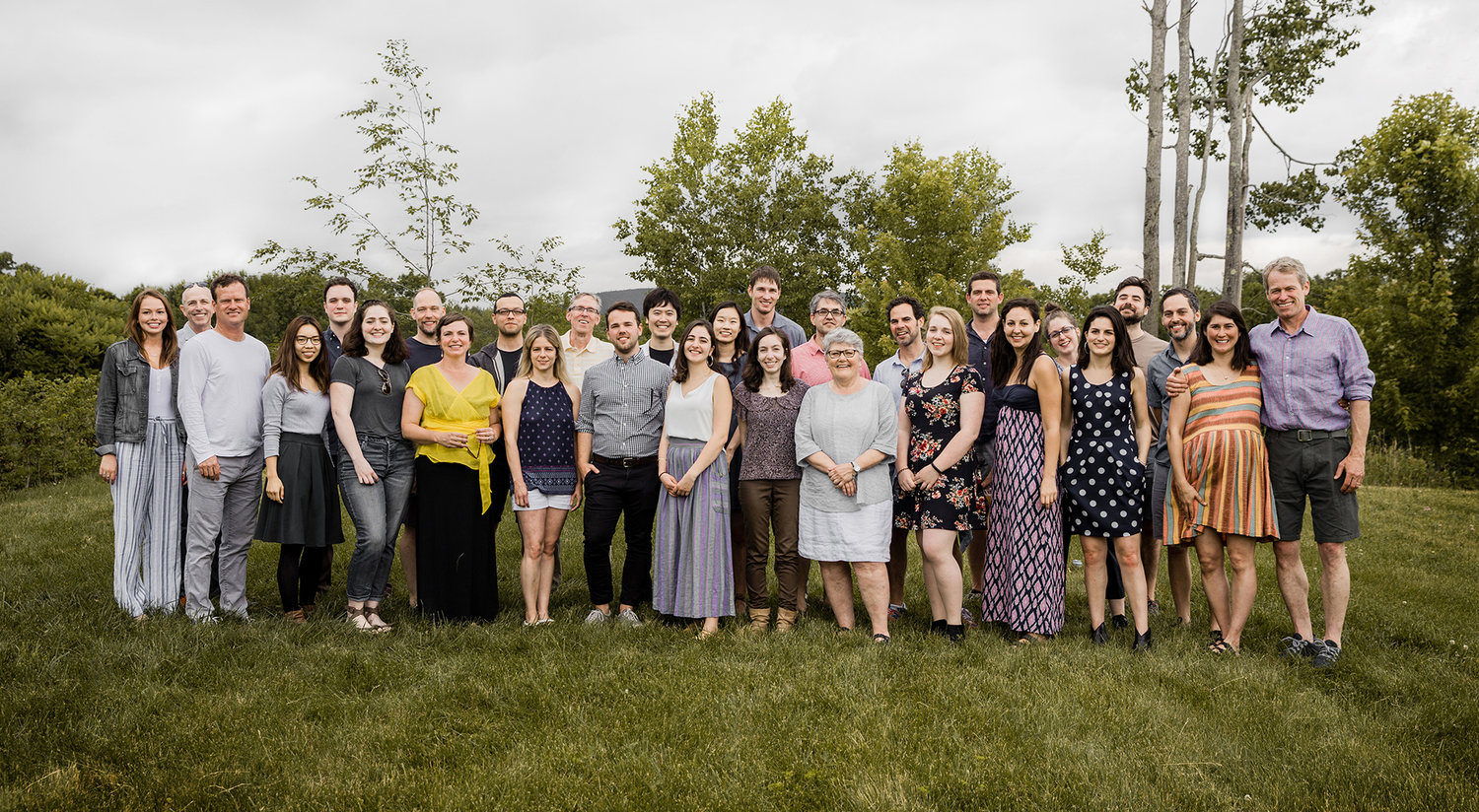
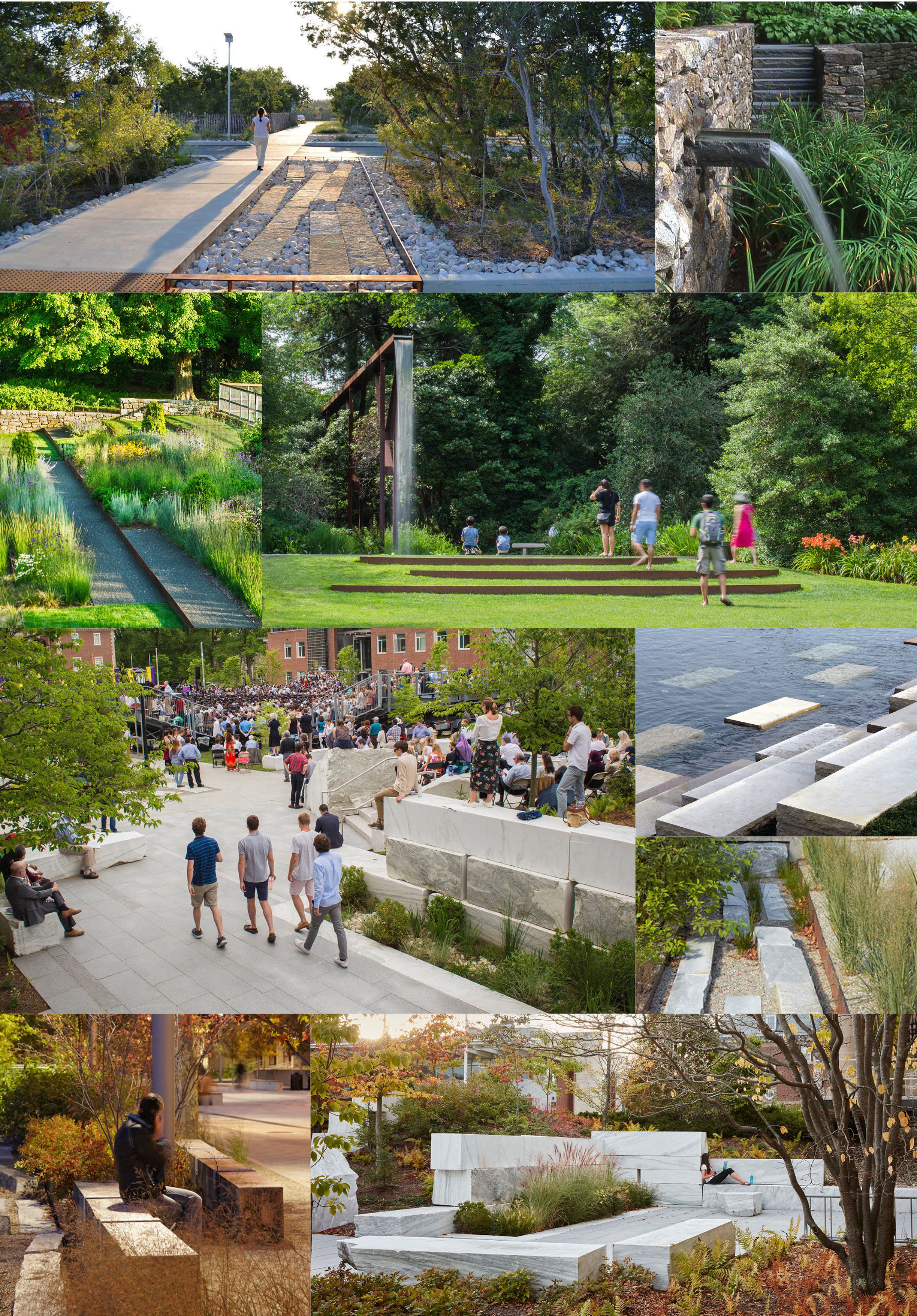

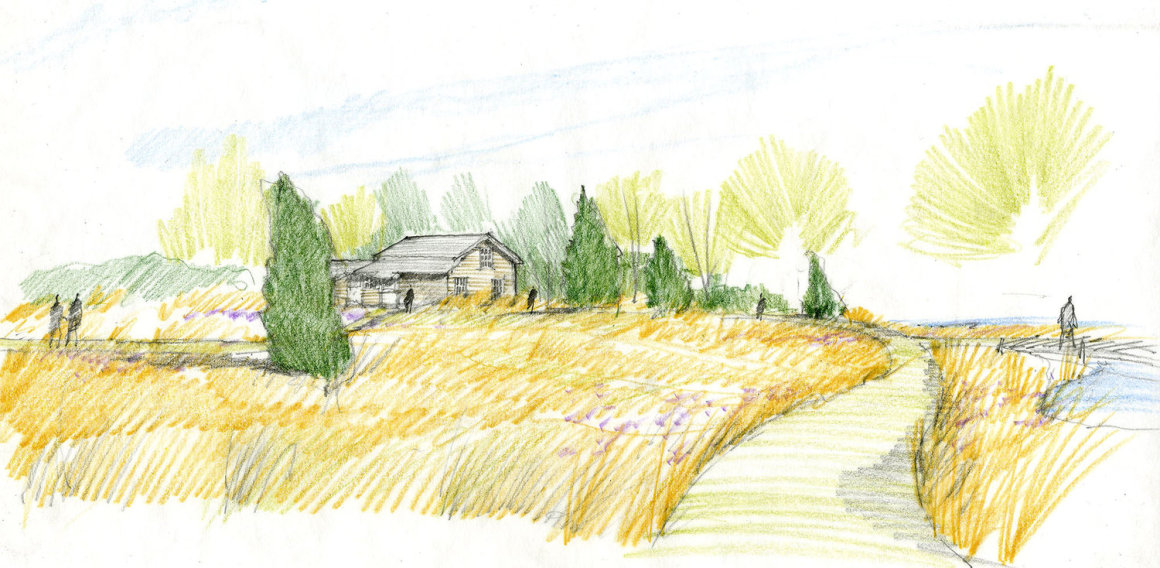
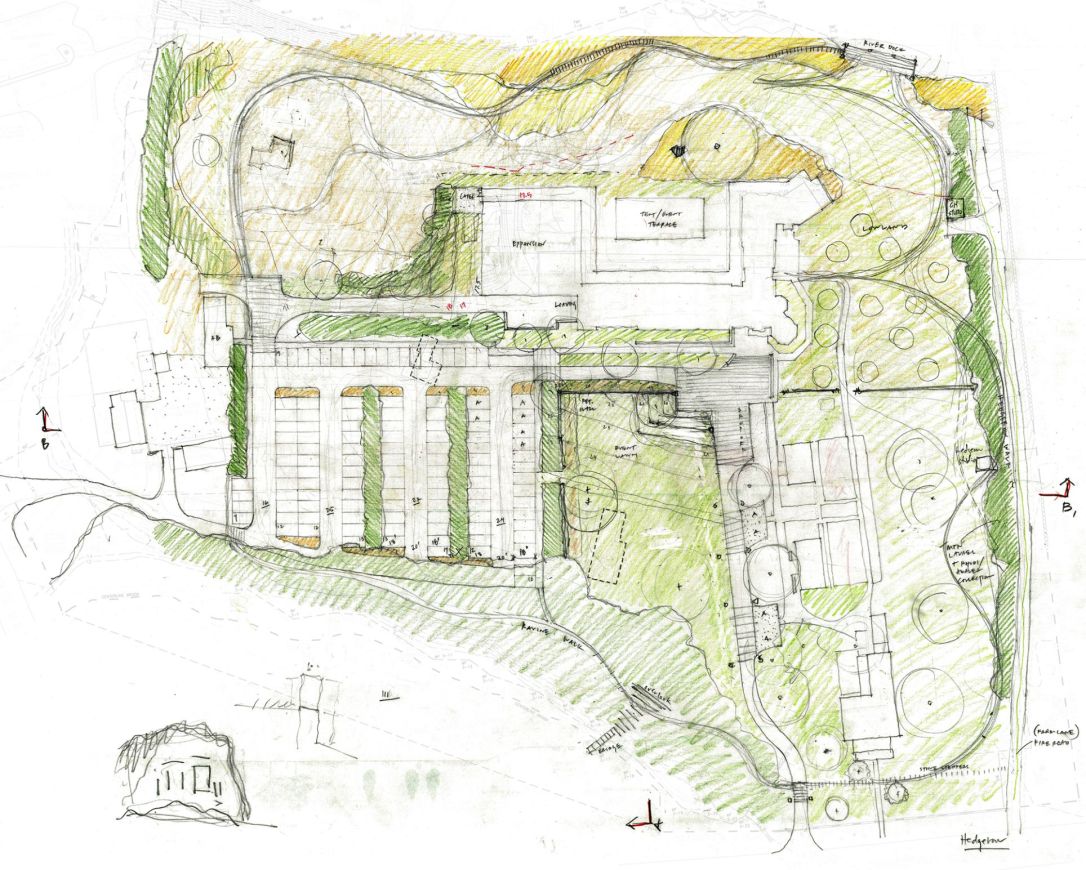
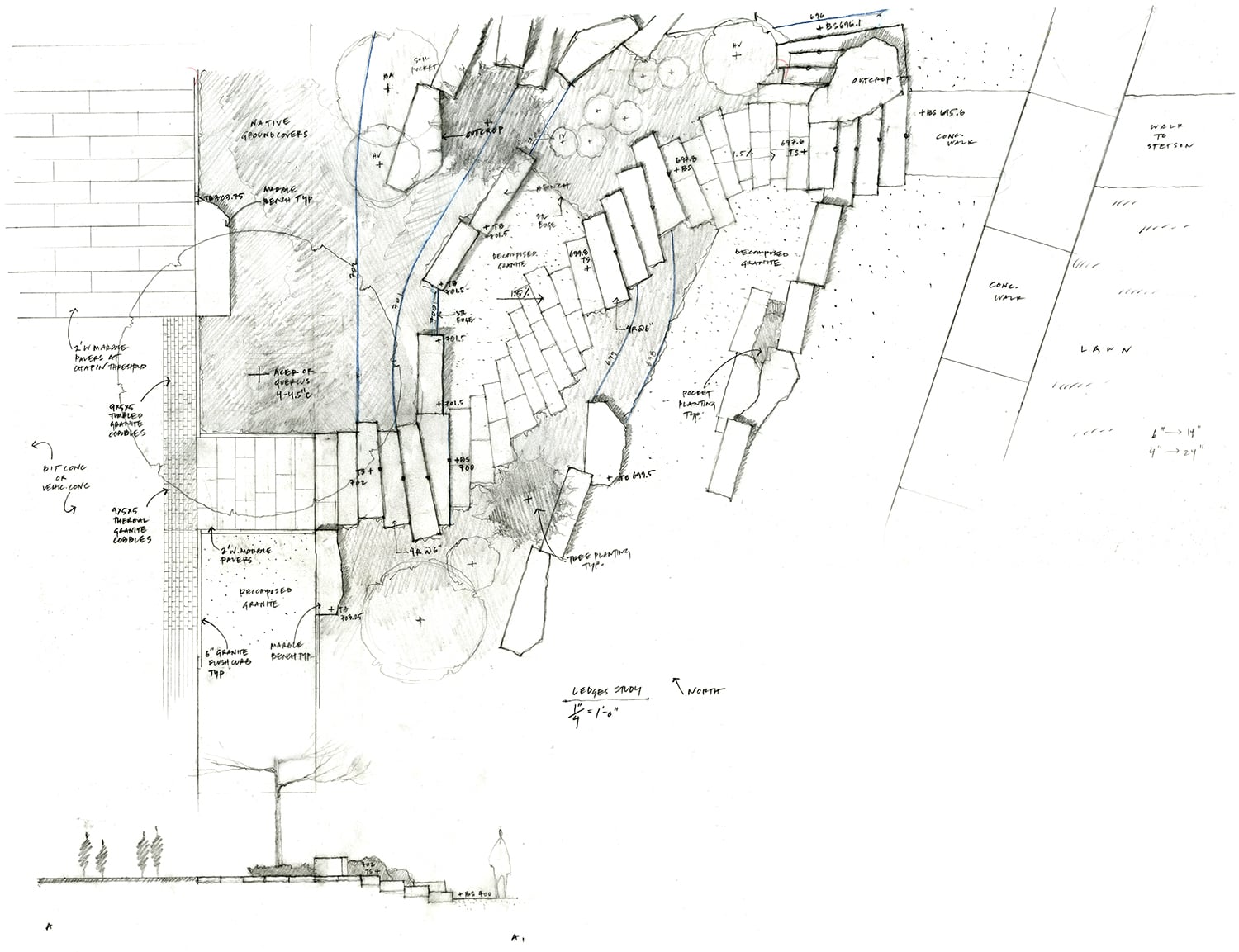


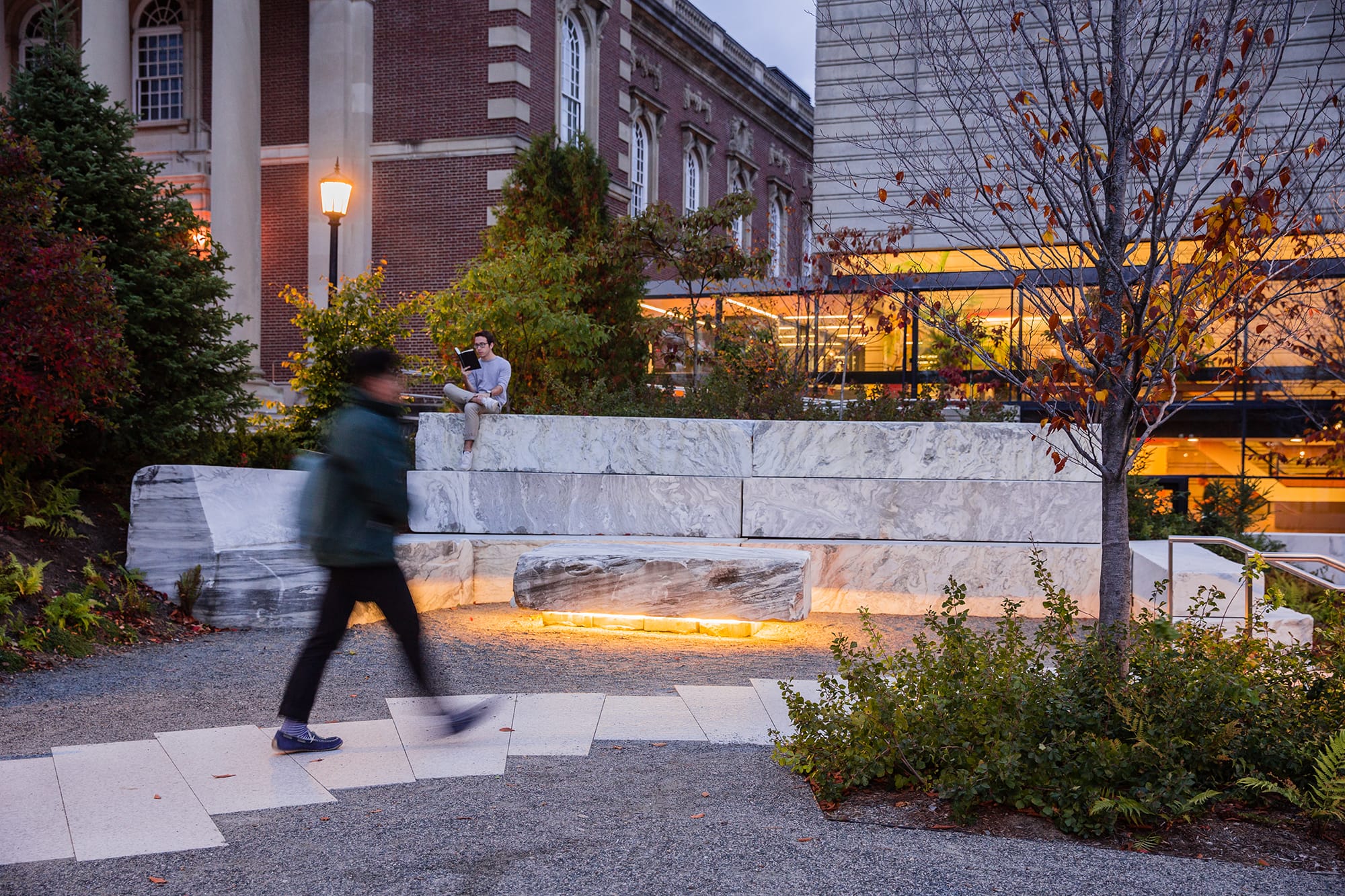

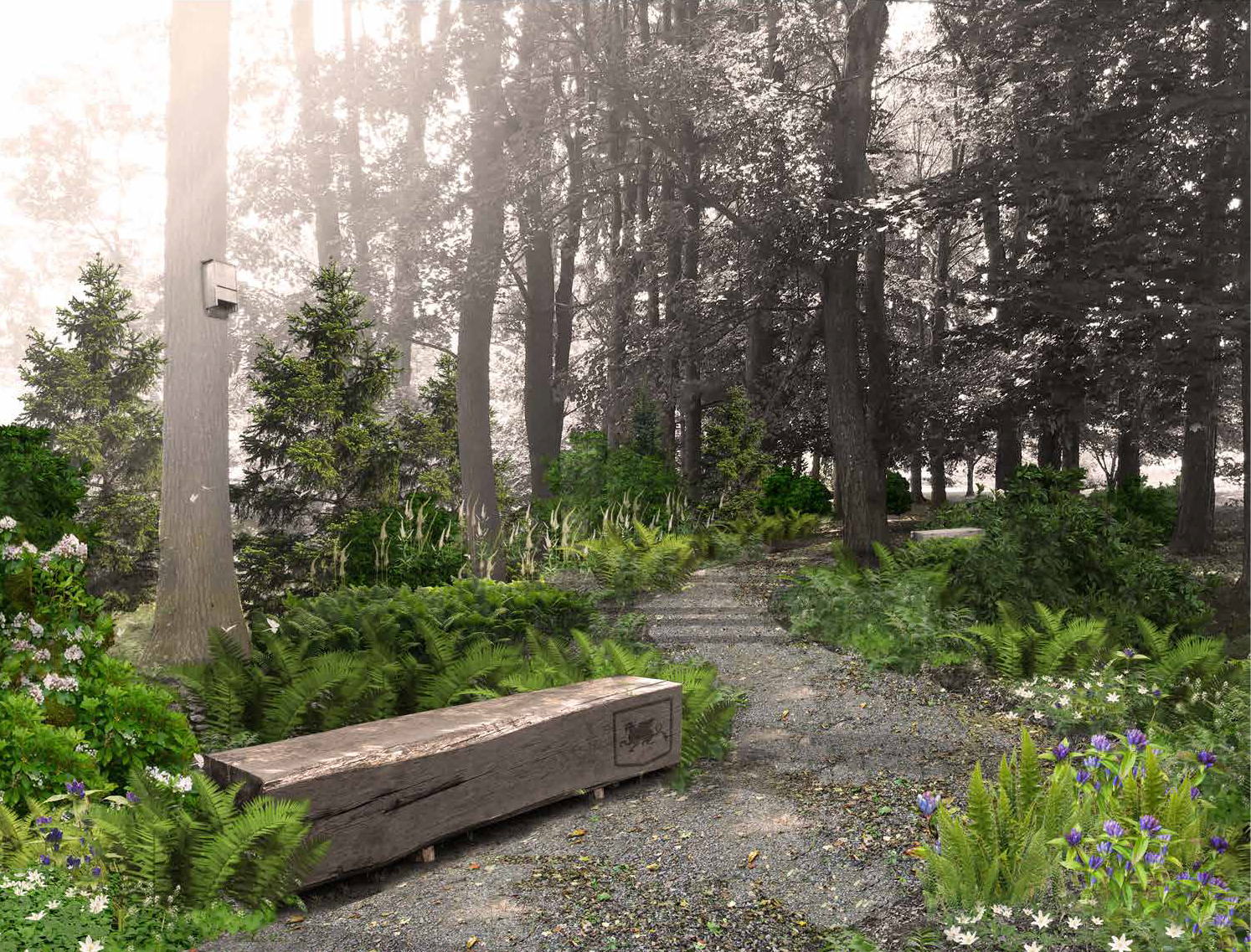
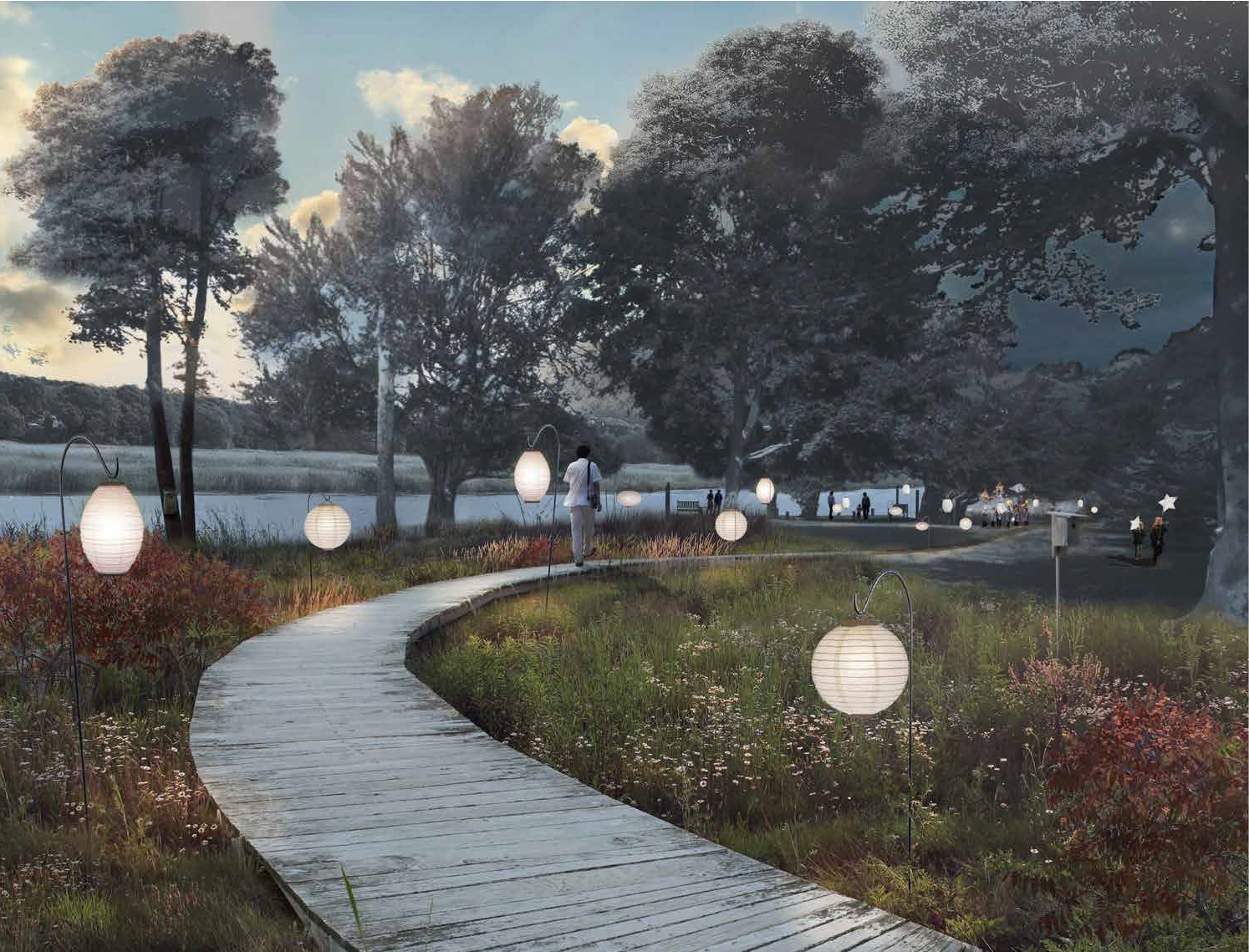
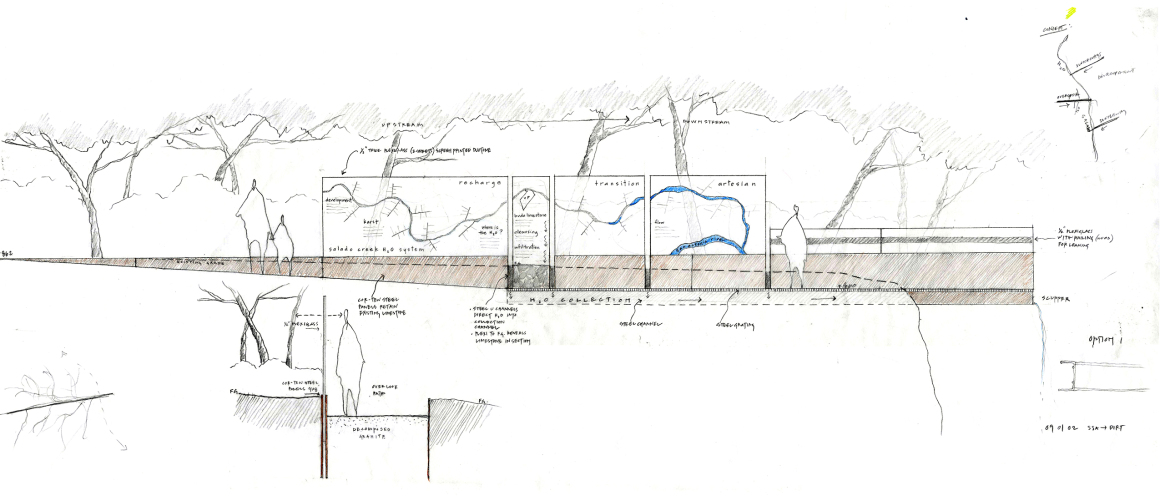
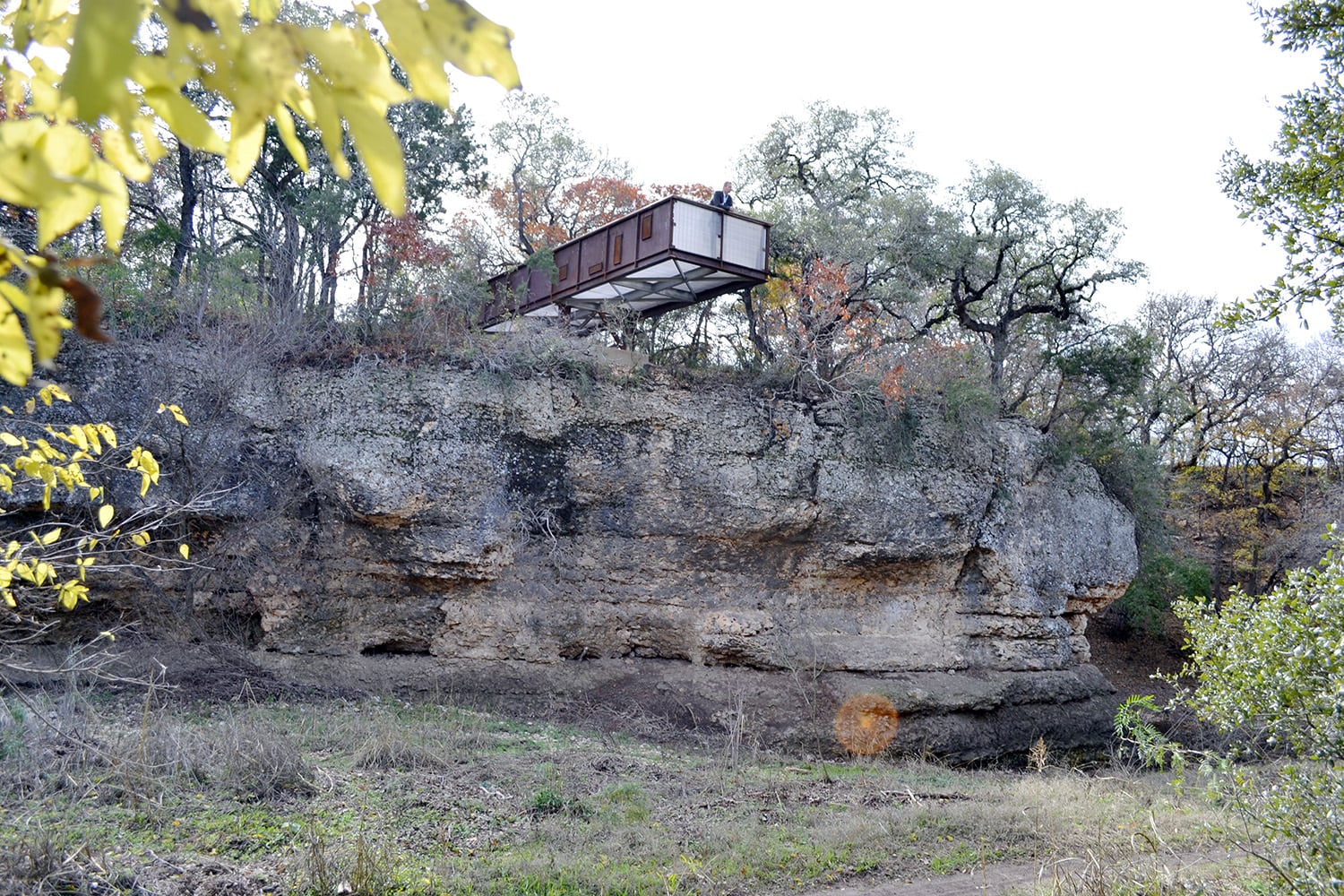
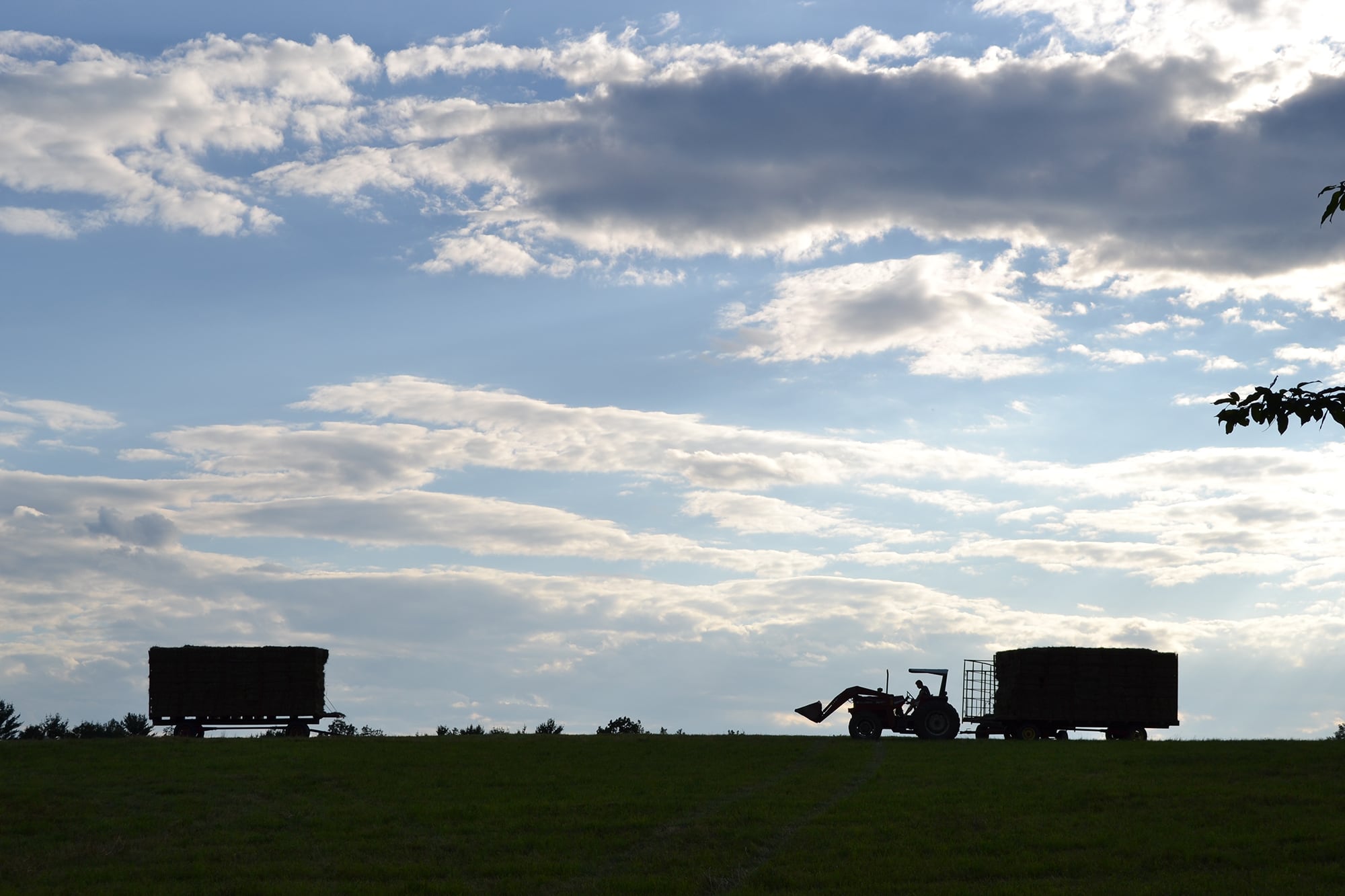

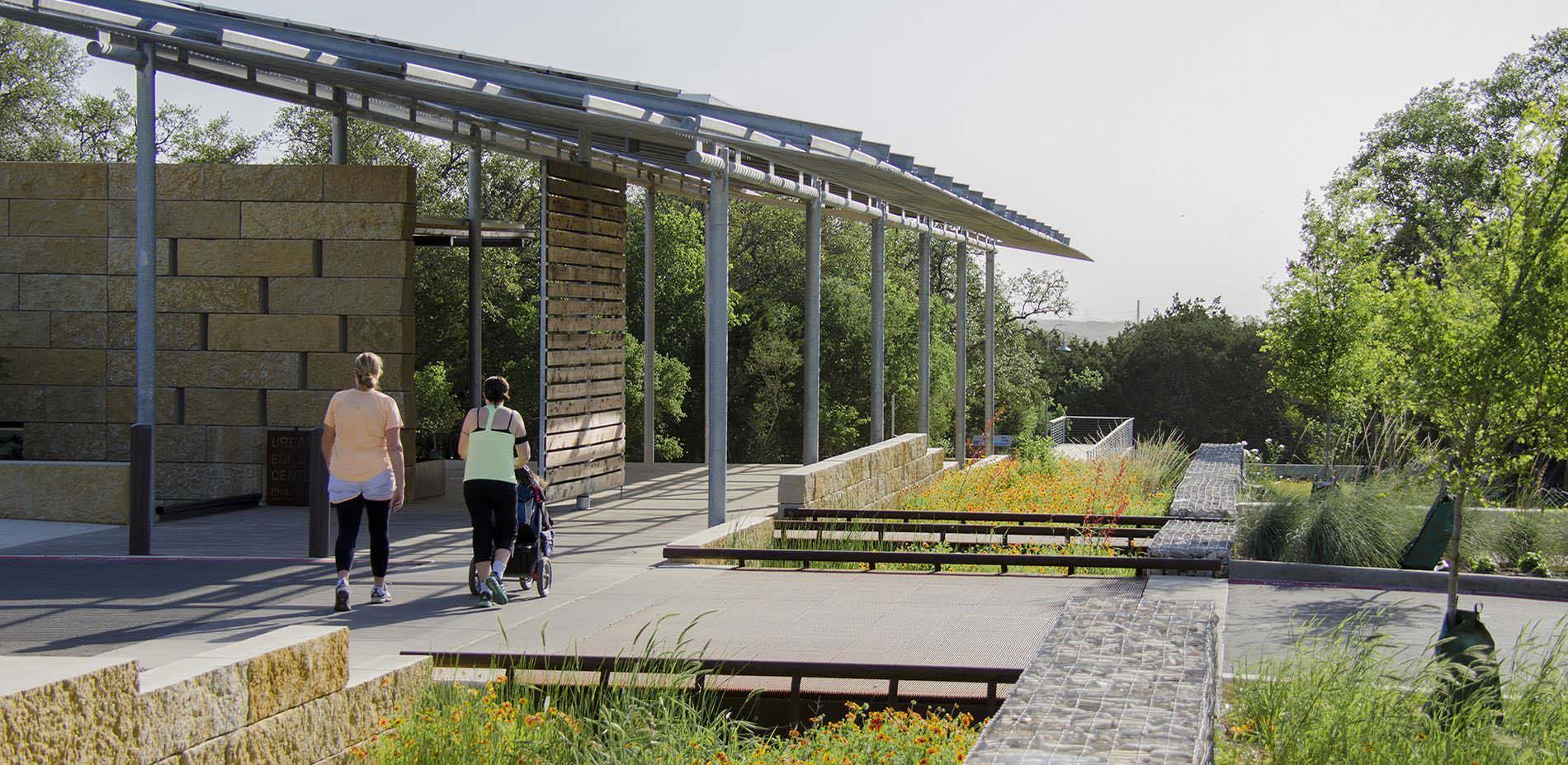



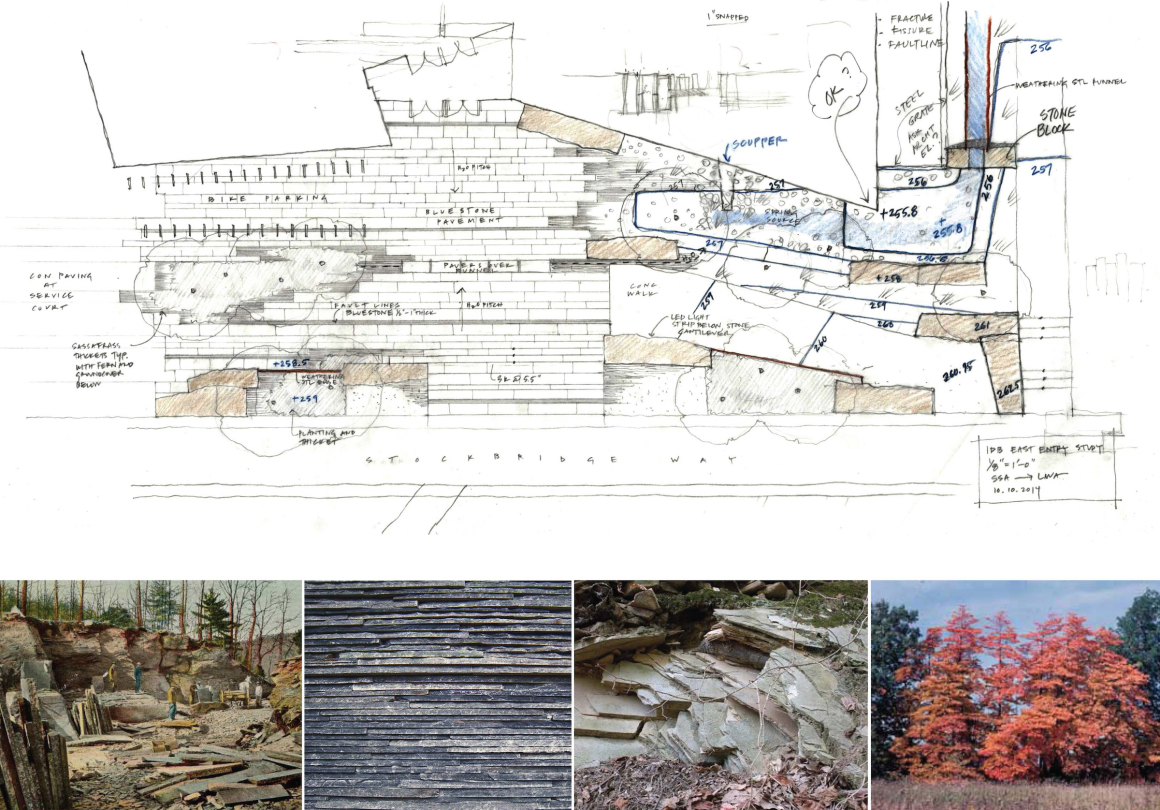

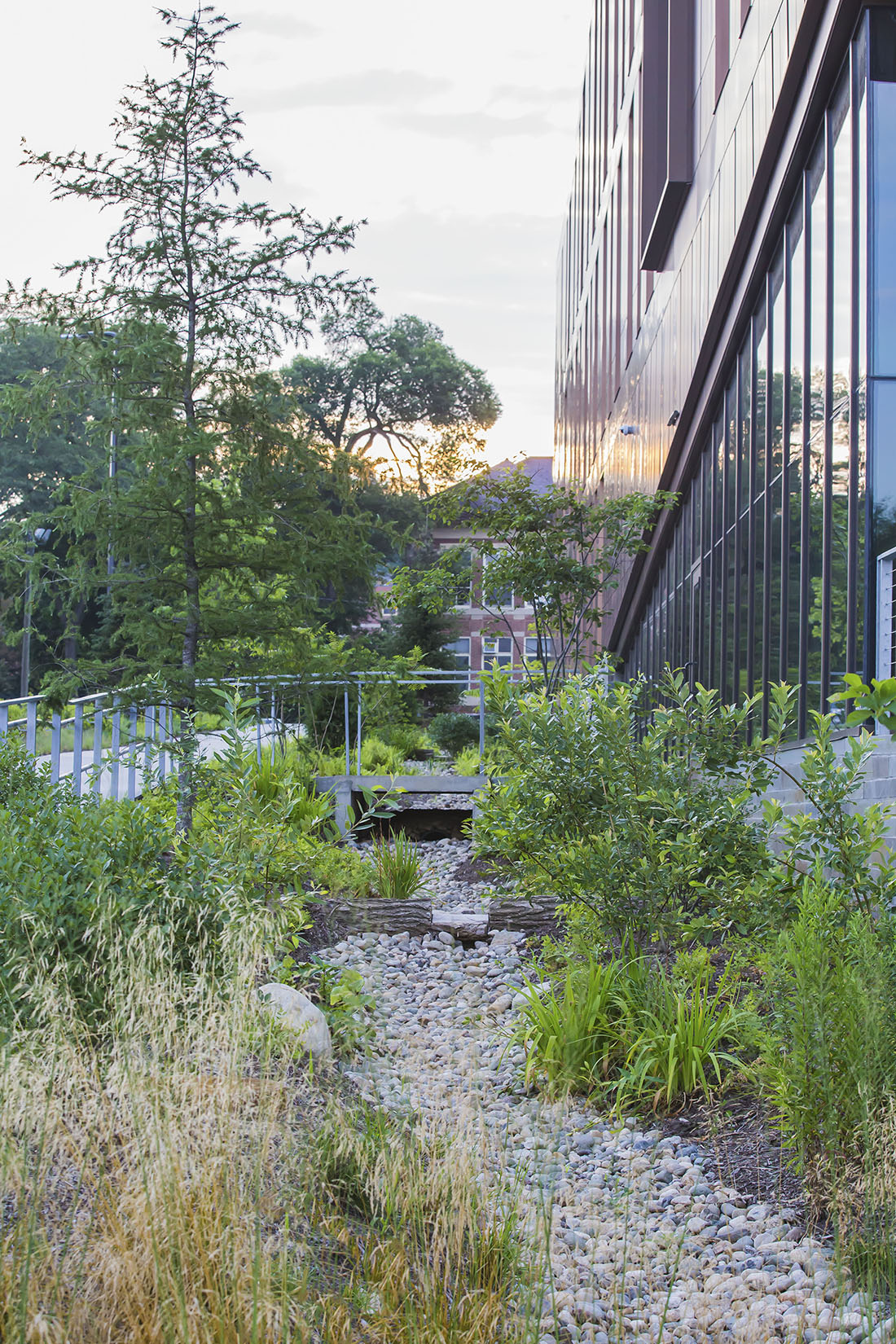
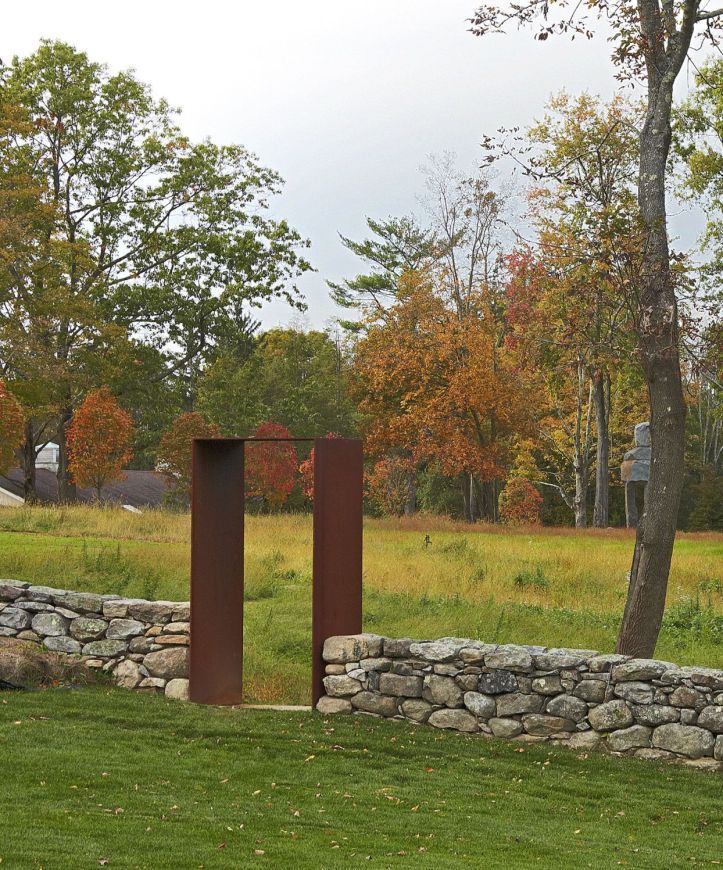

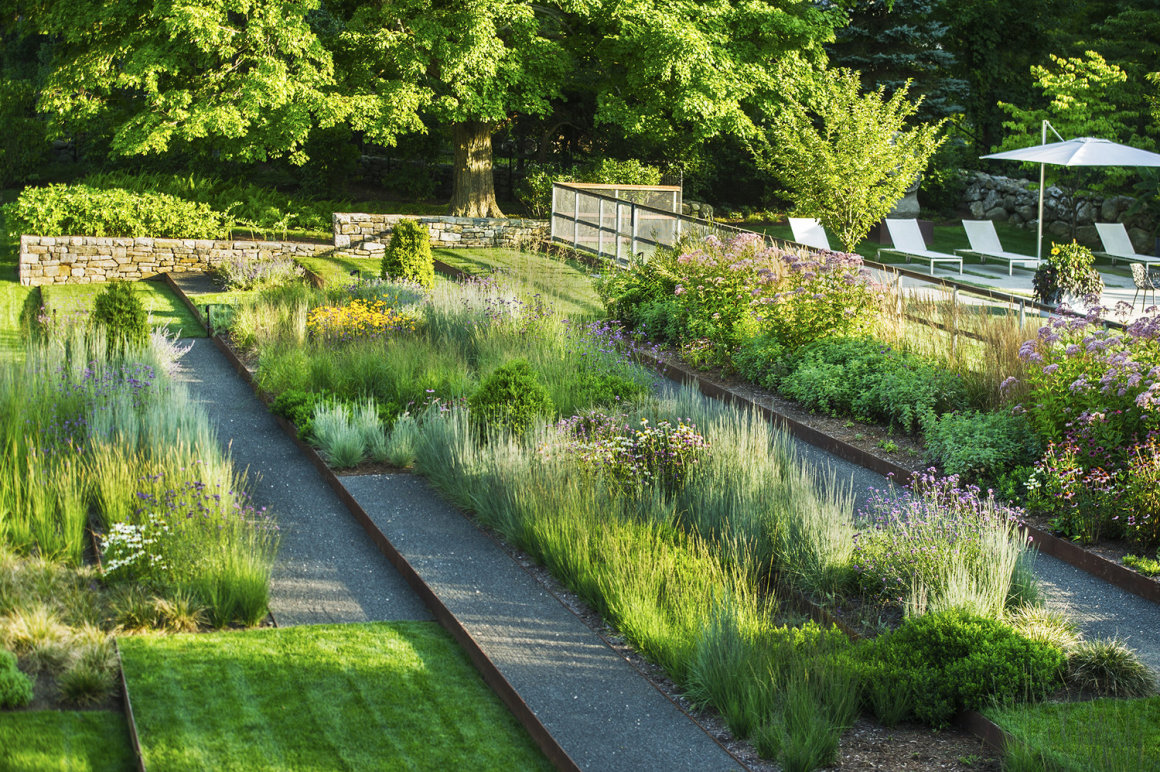
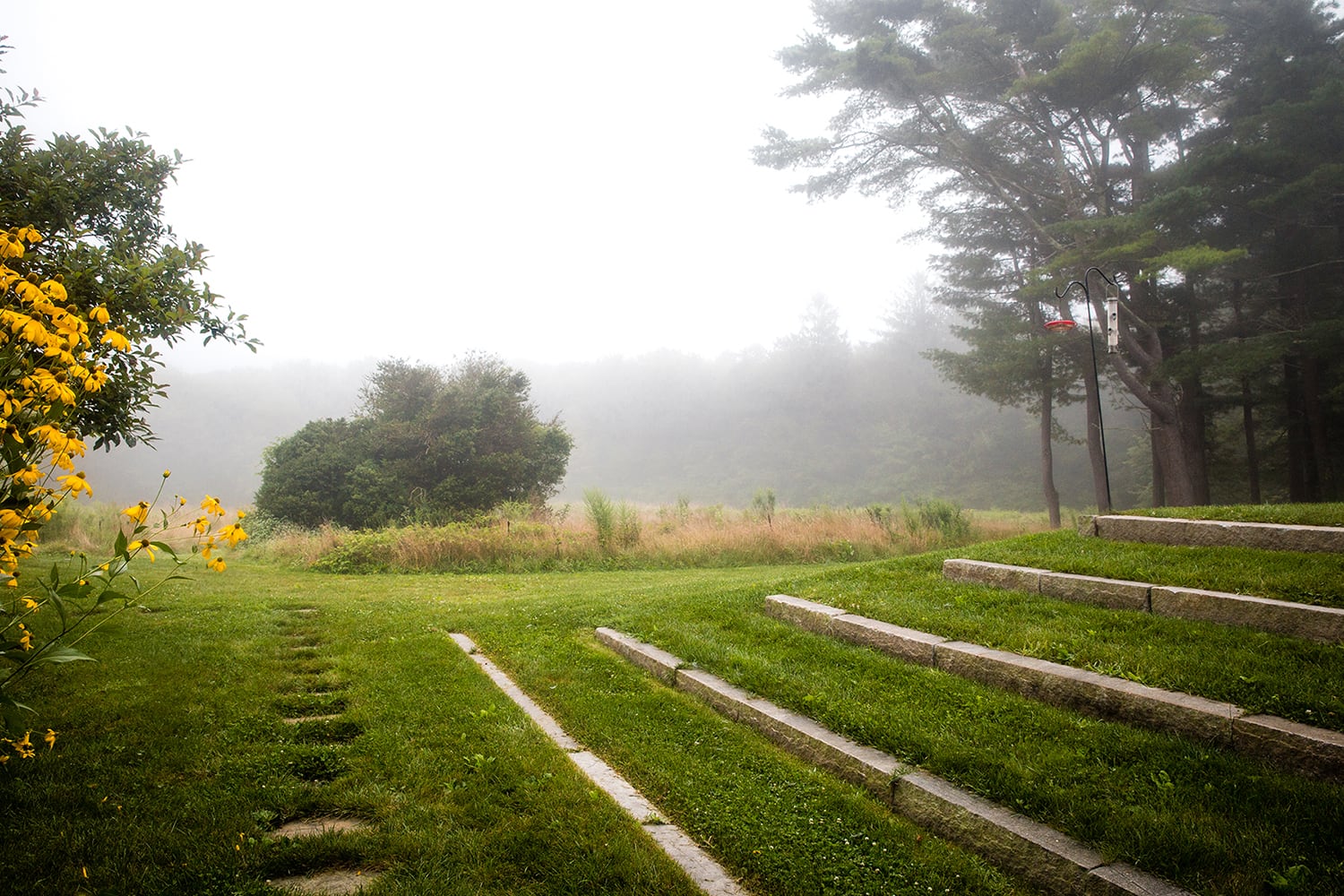
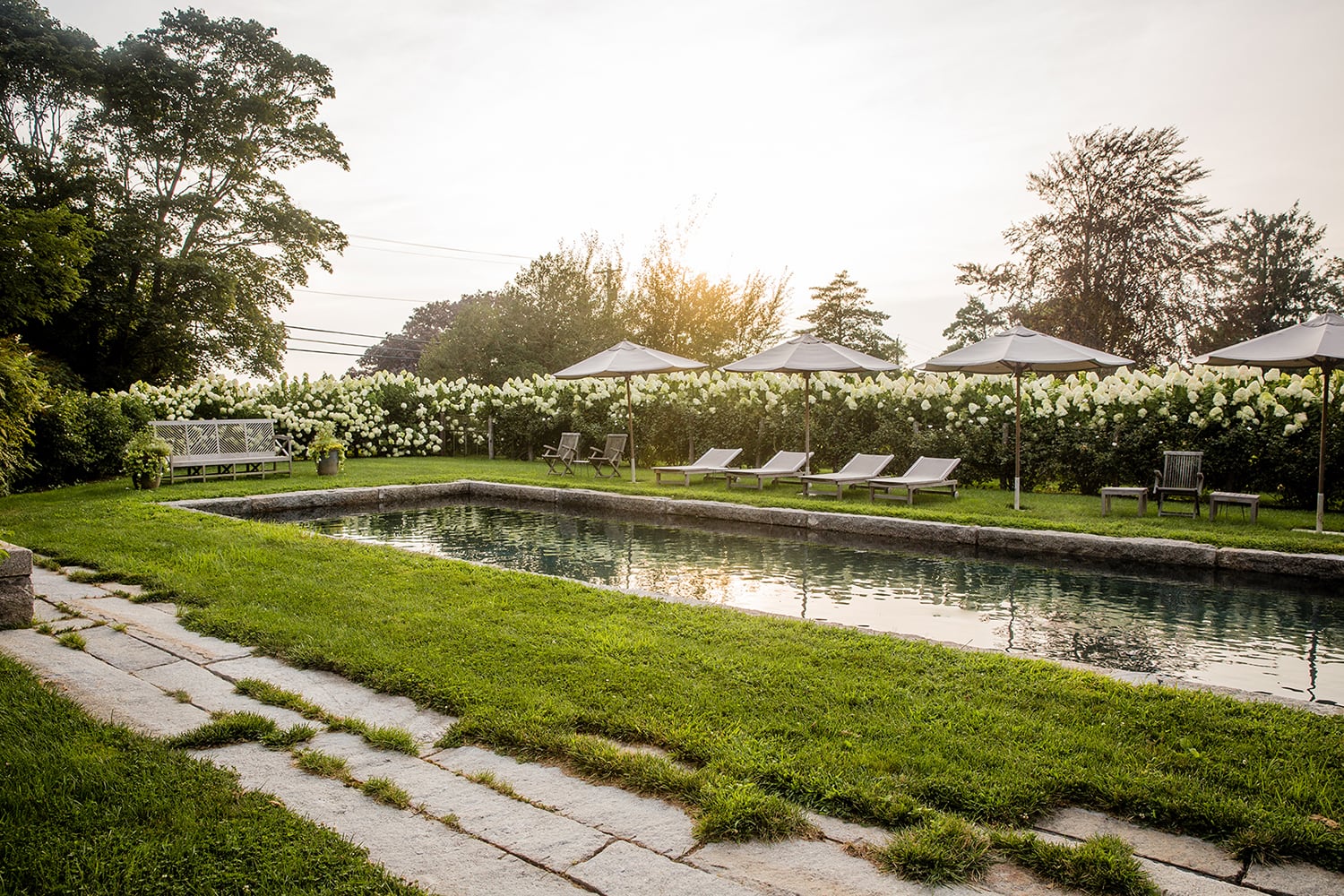
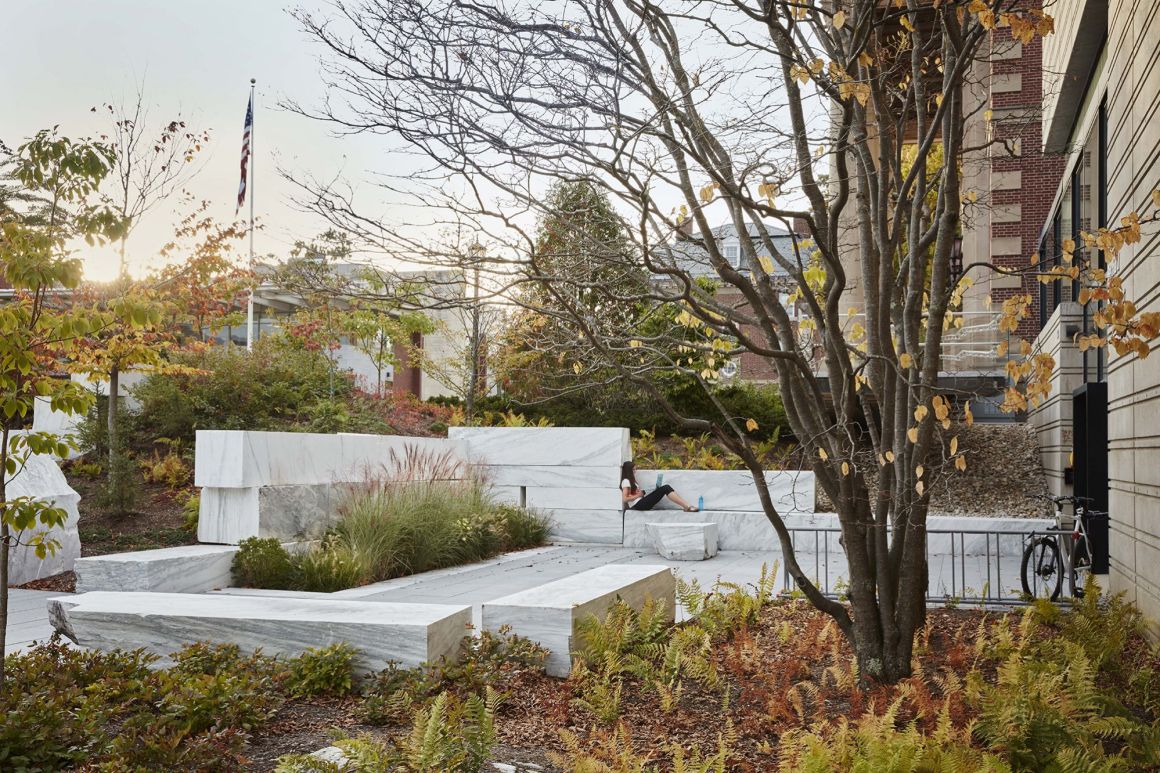
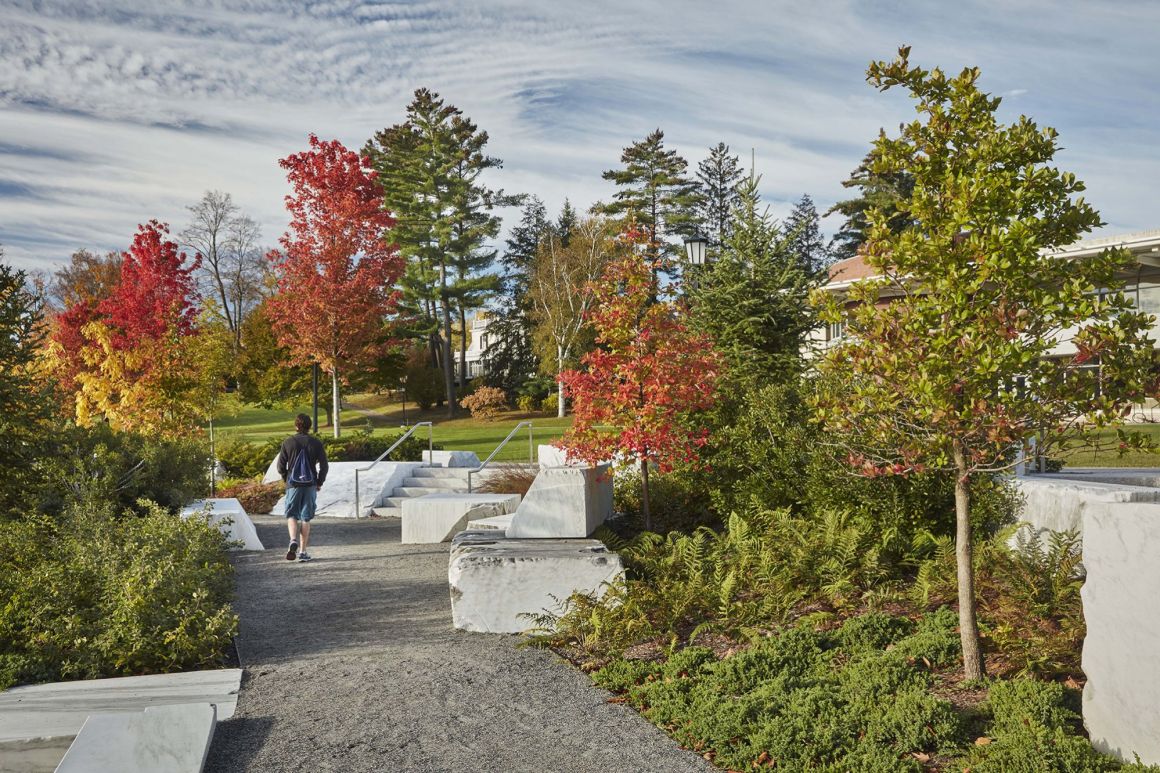
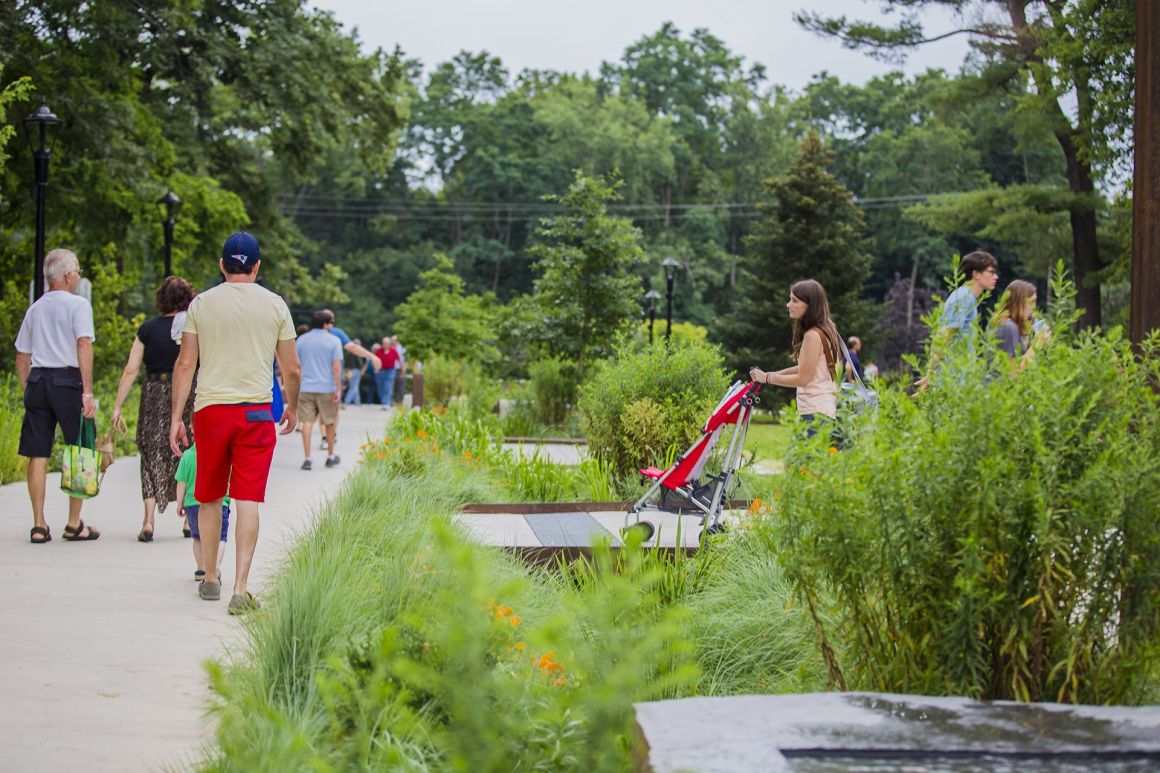


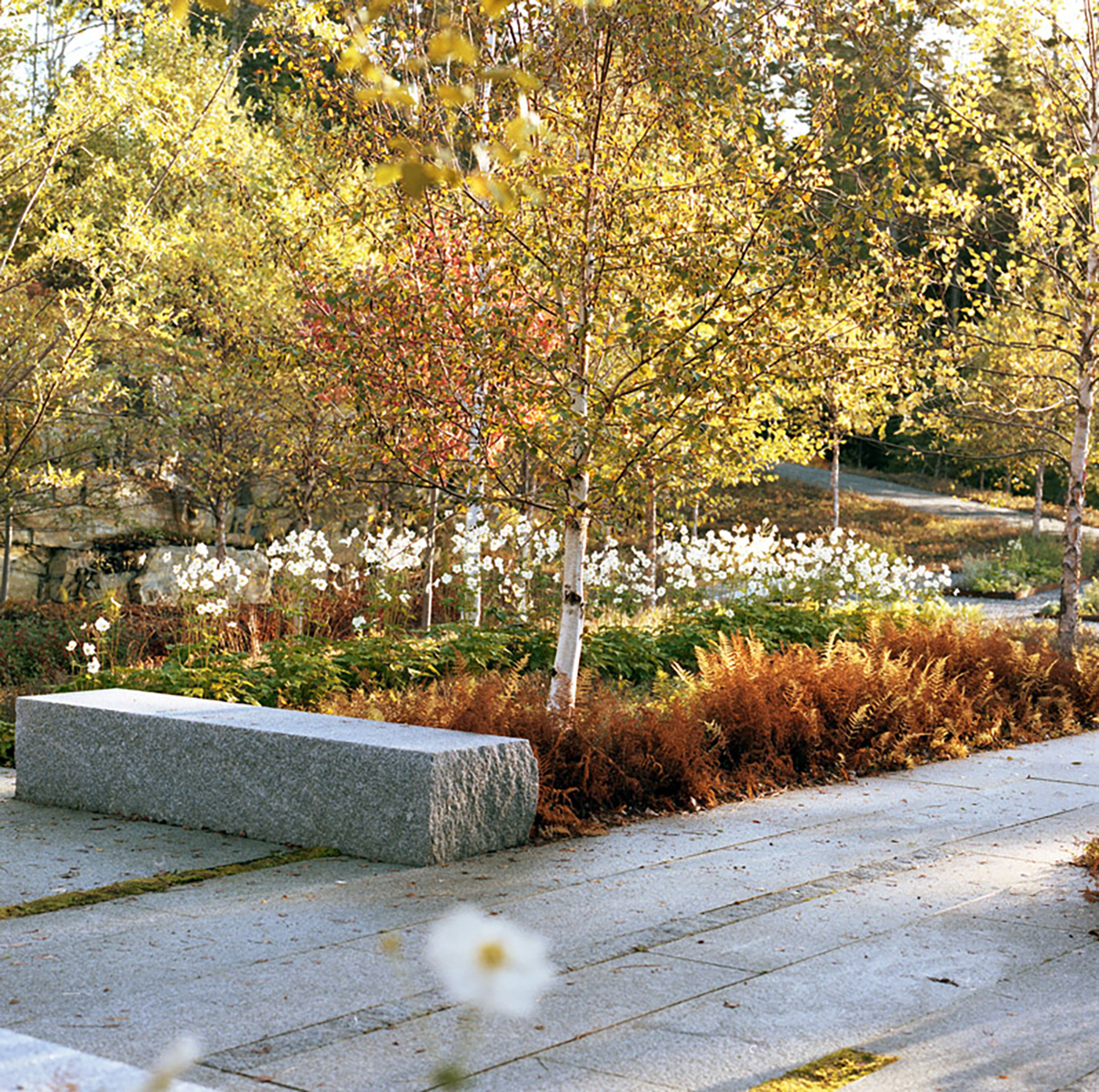
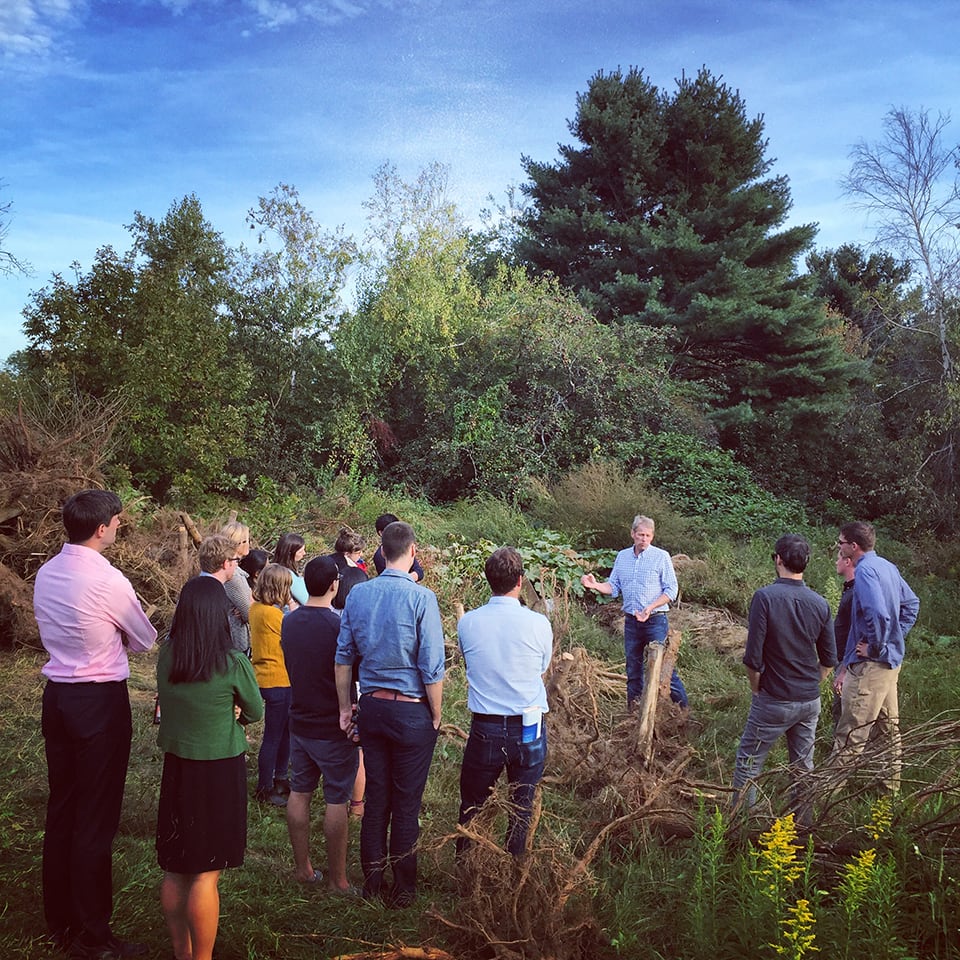


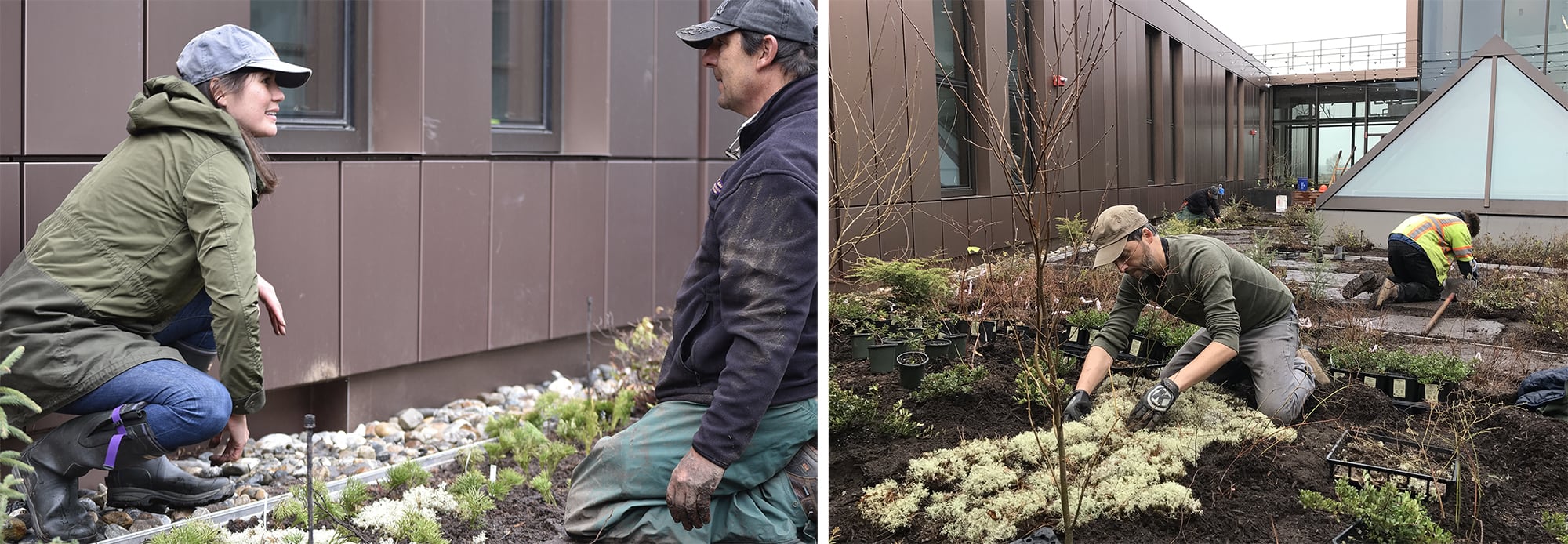
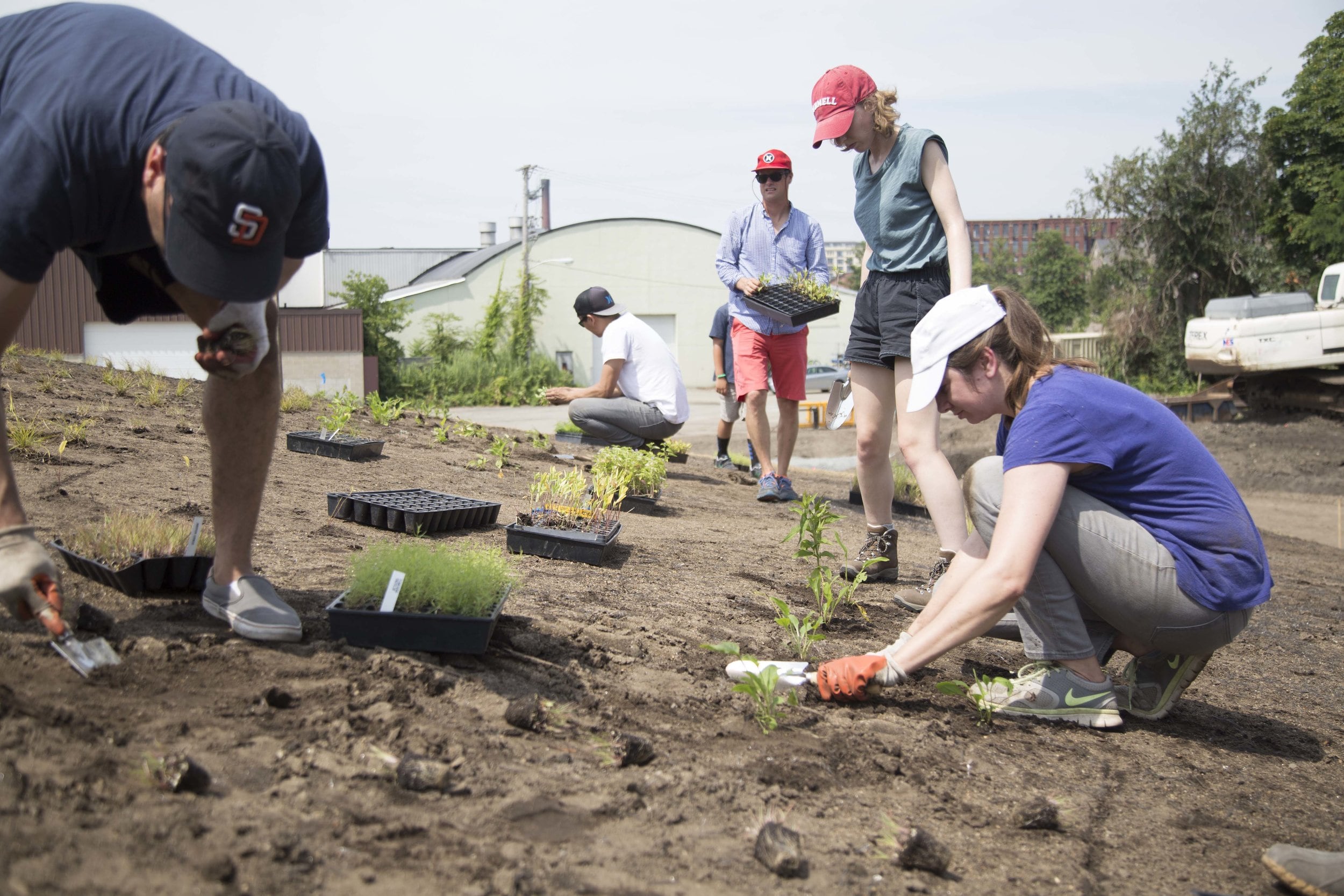
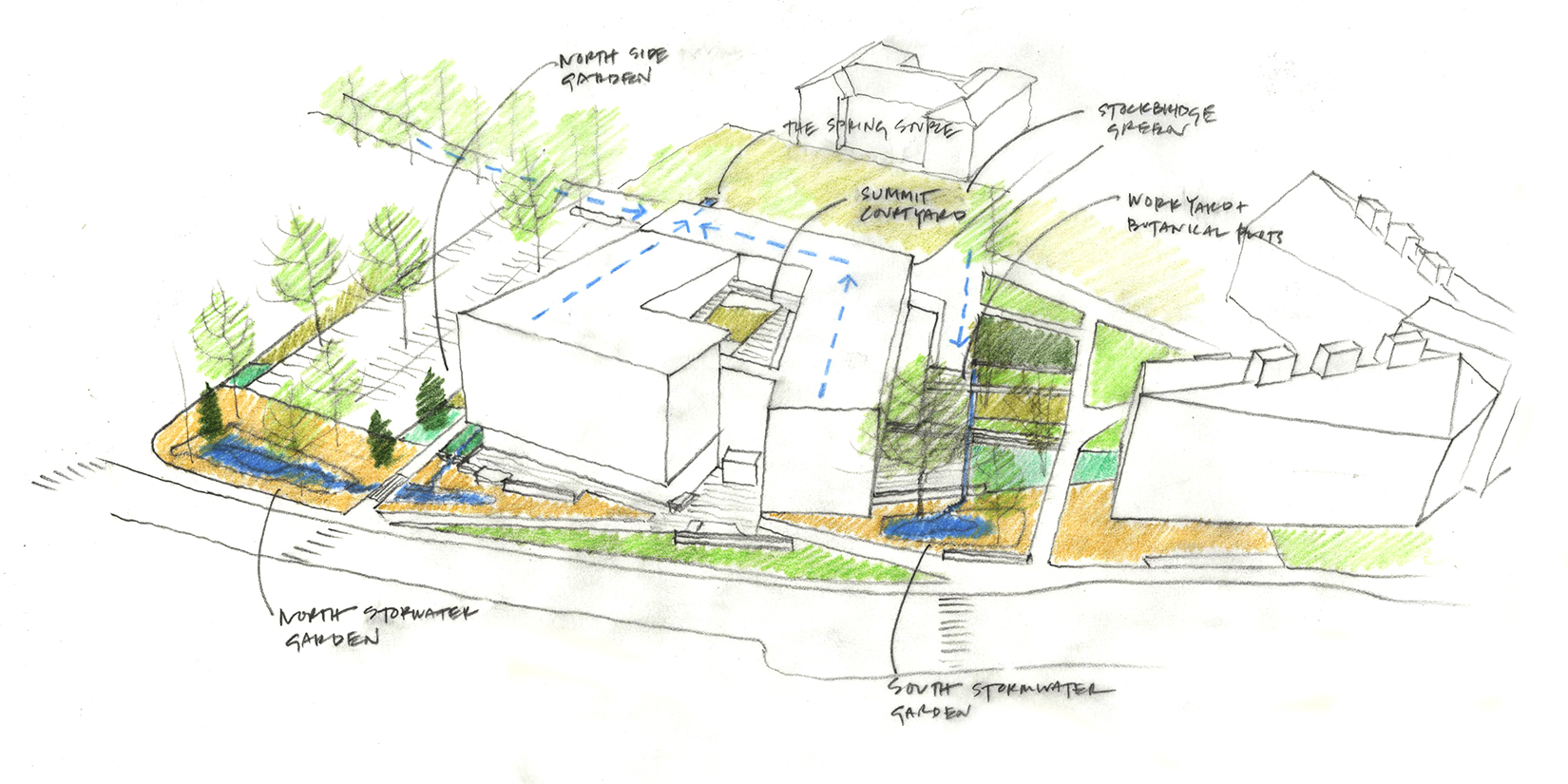
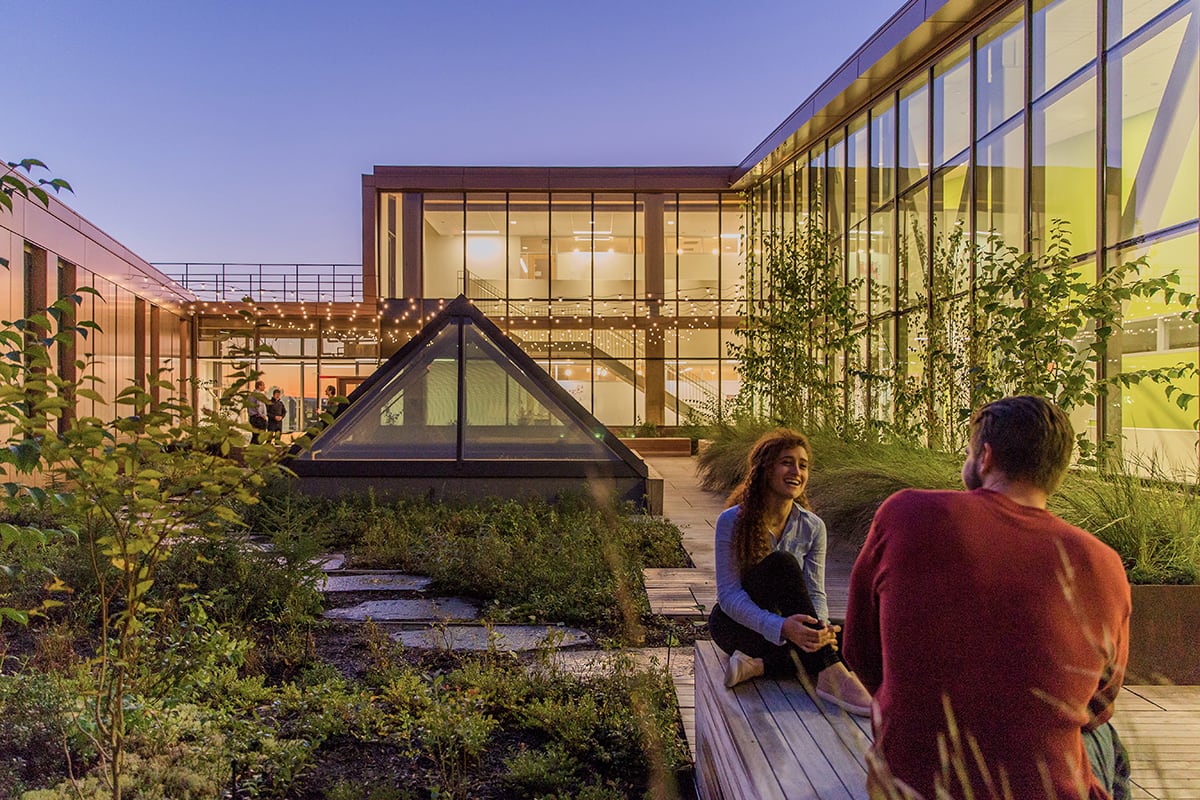
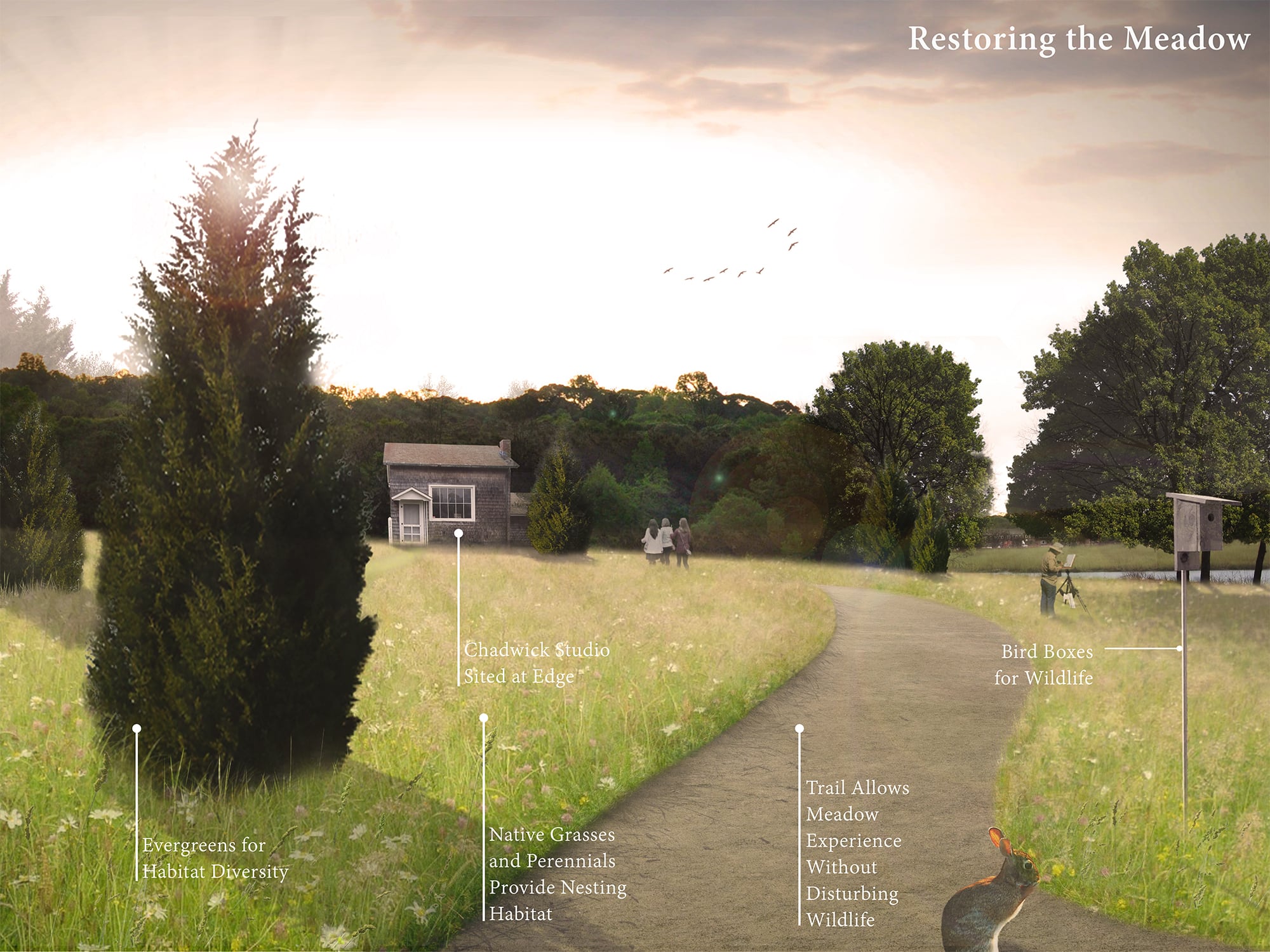
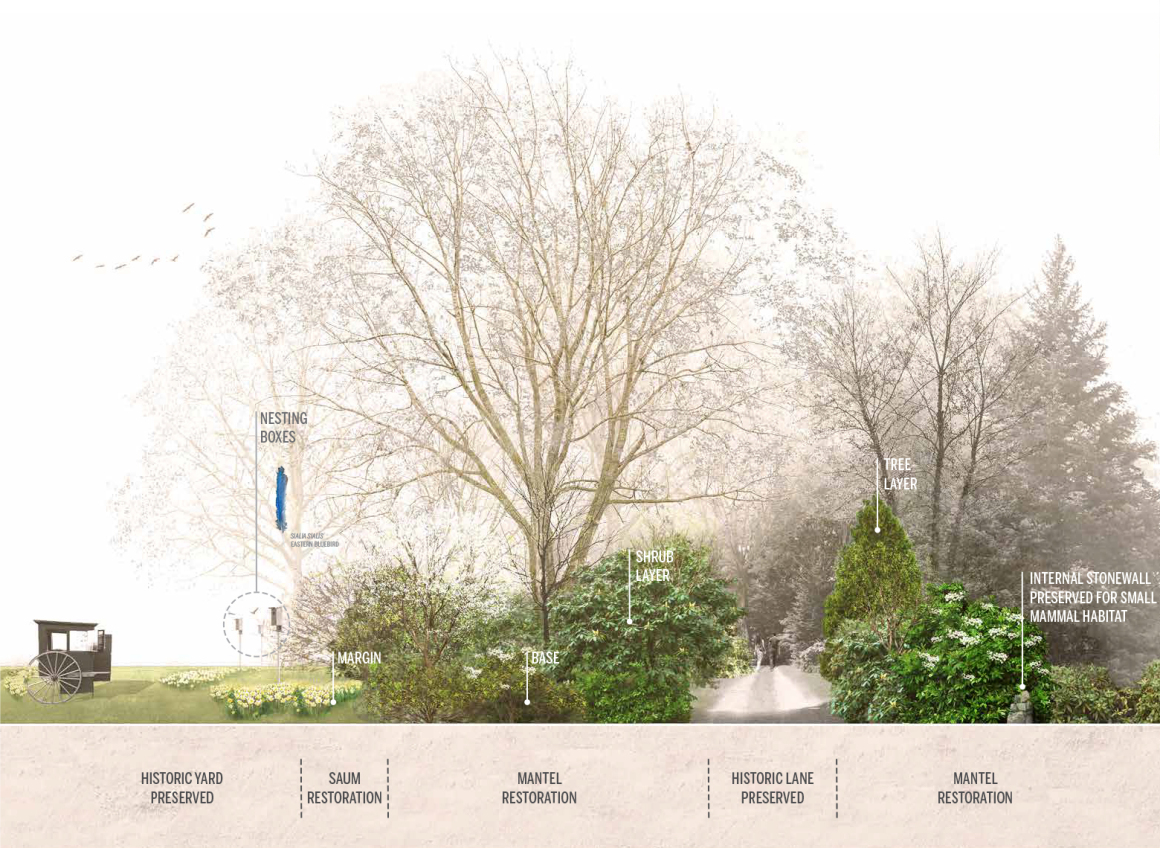



0 Comments